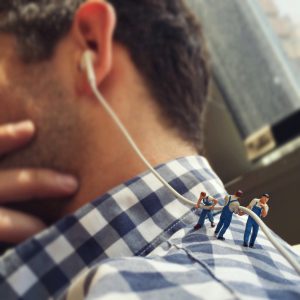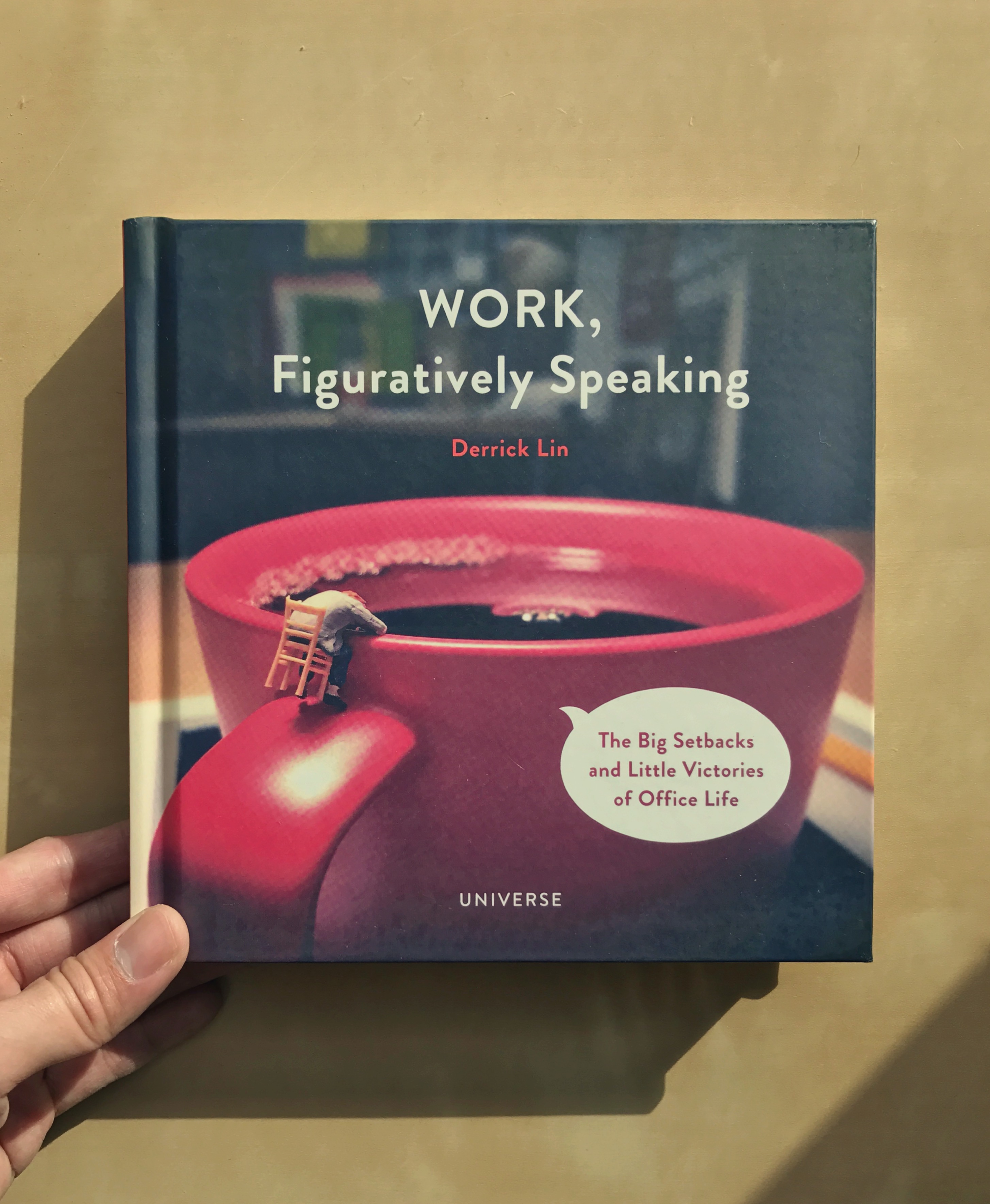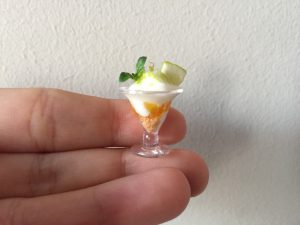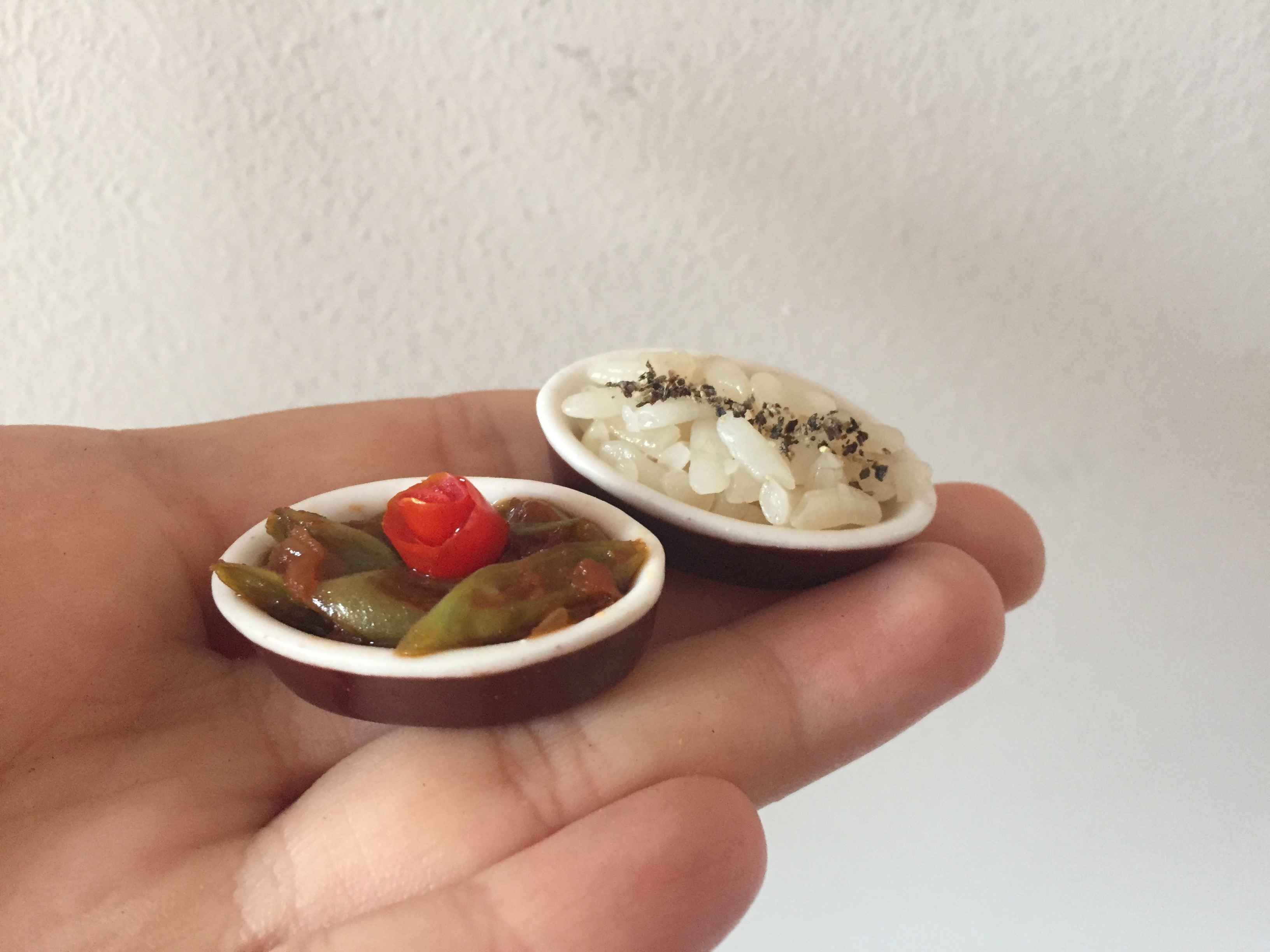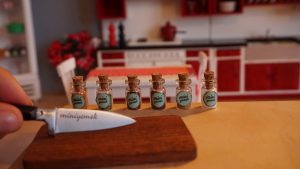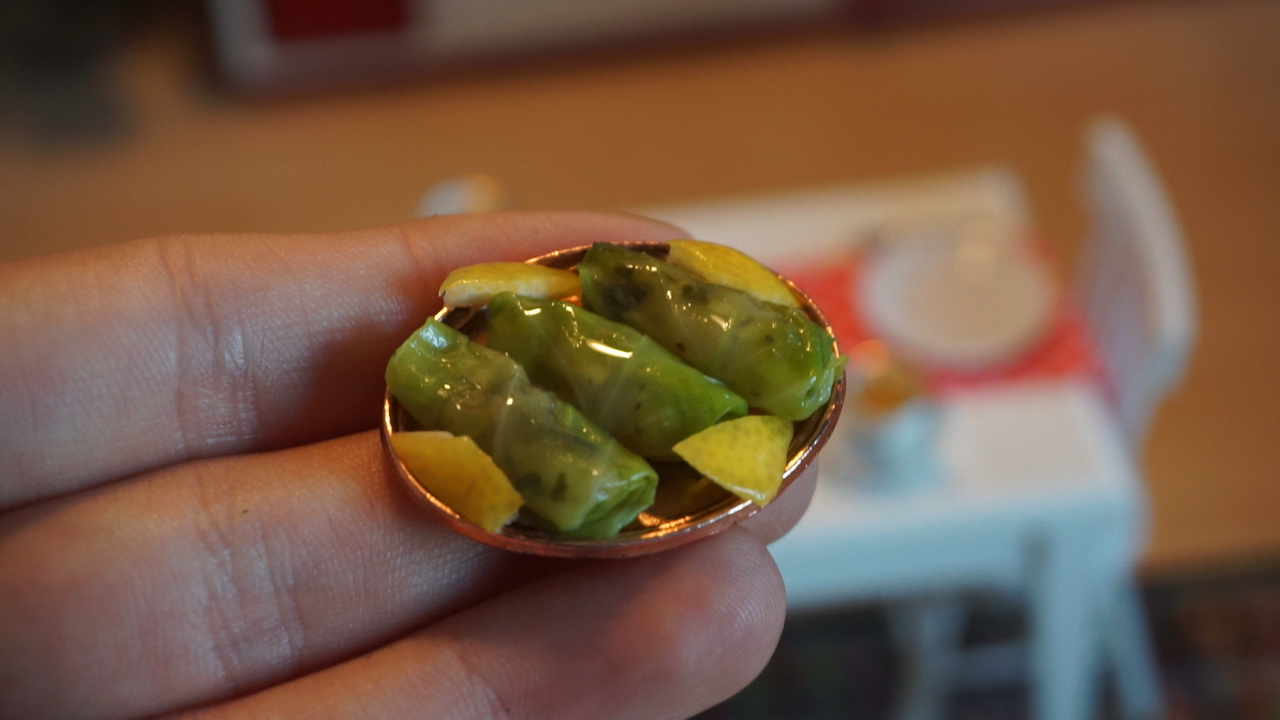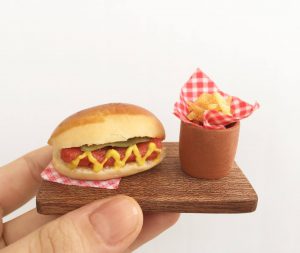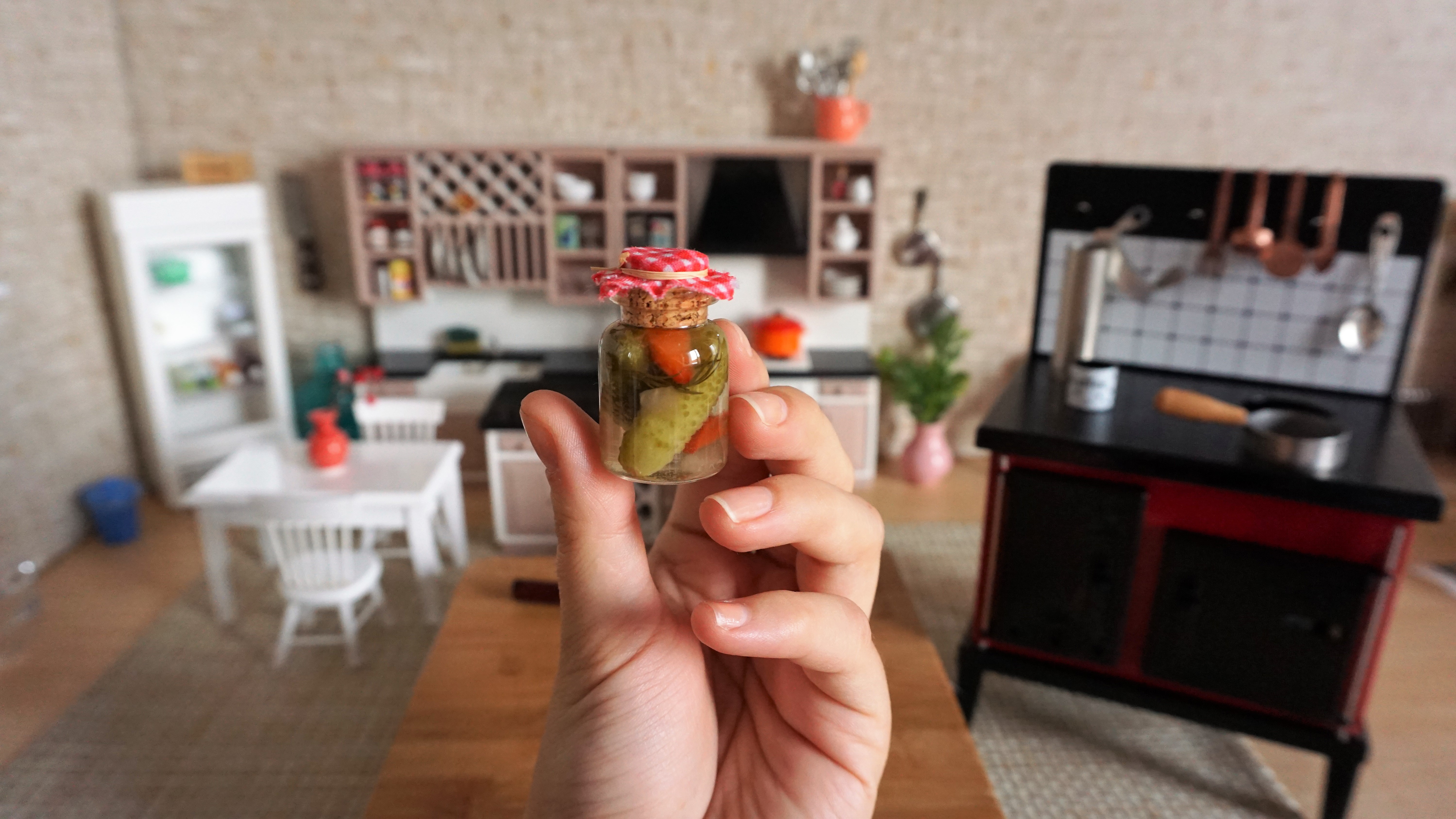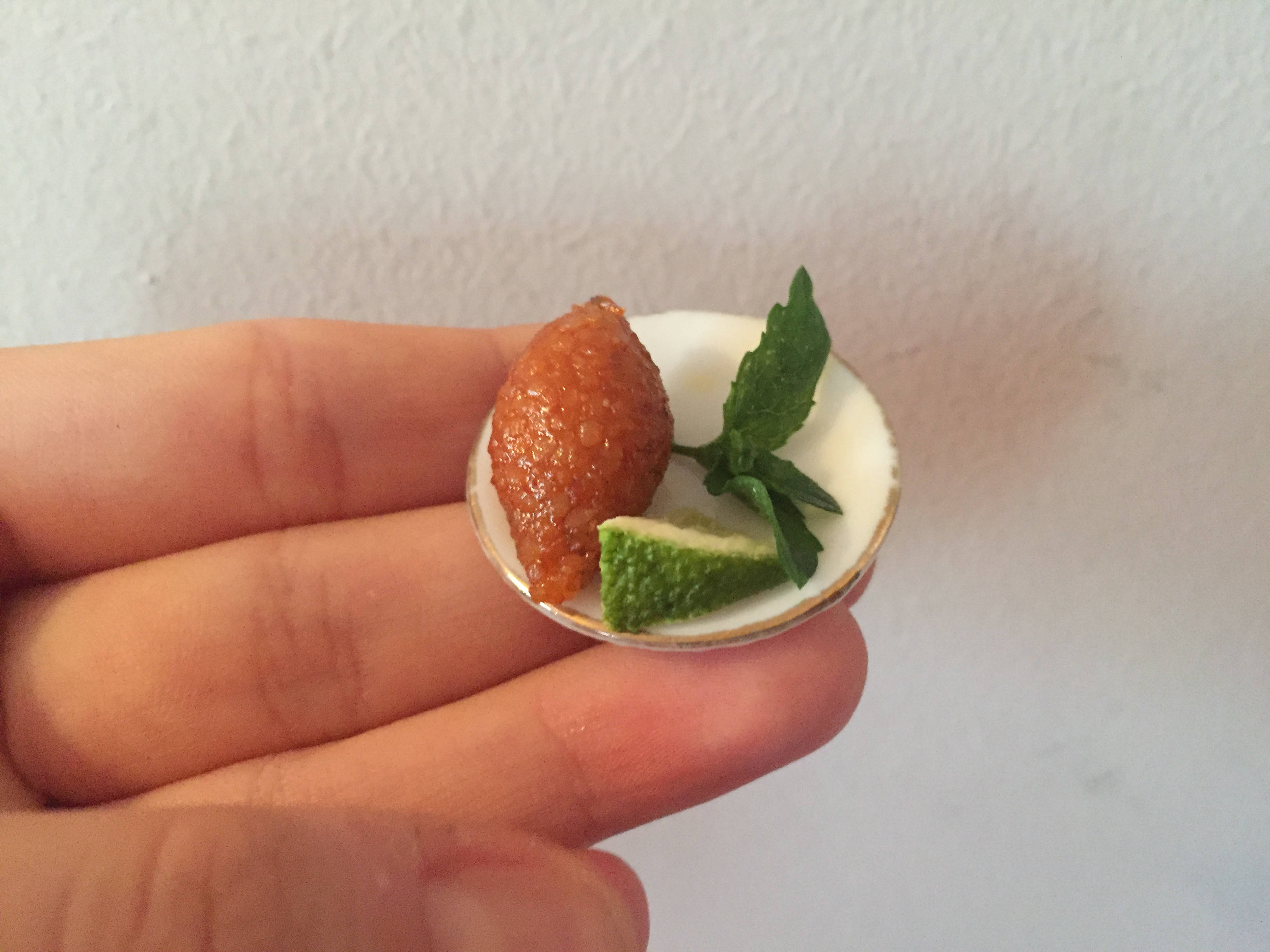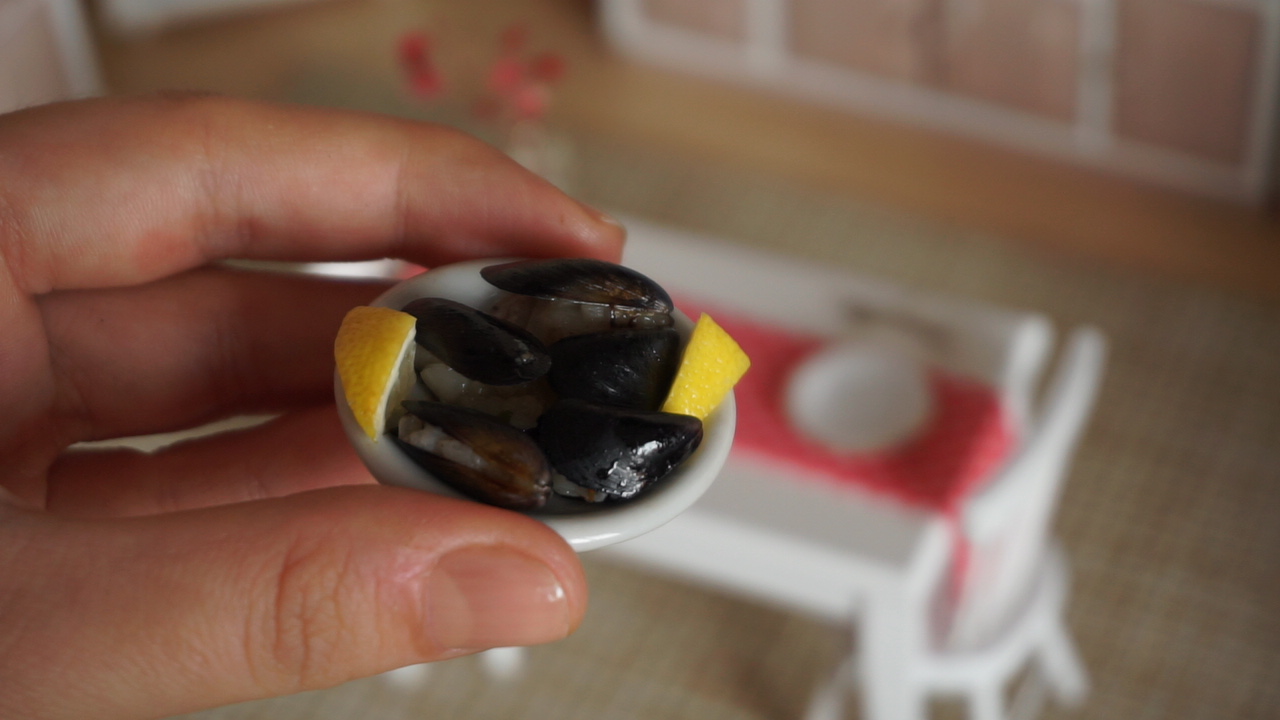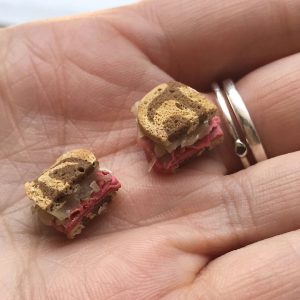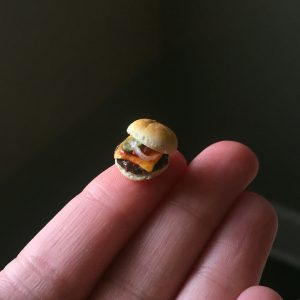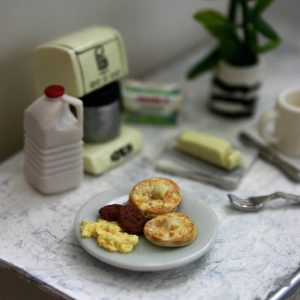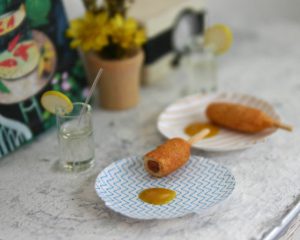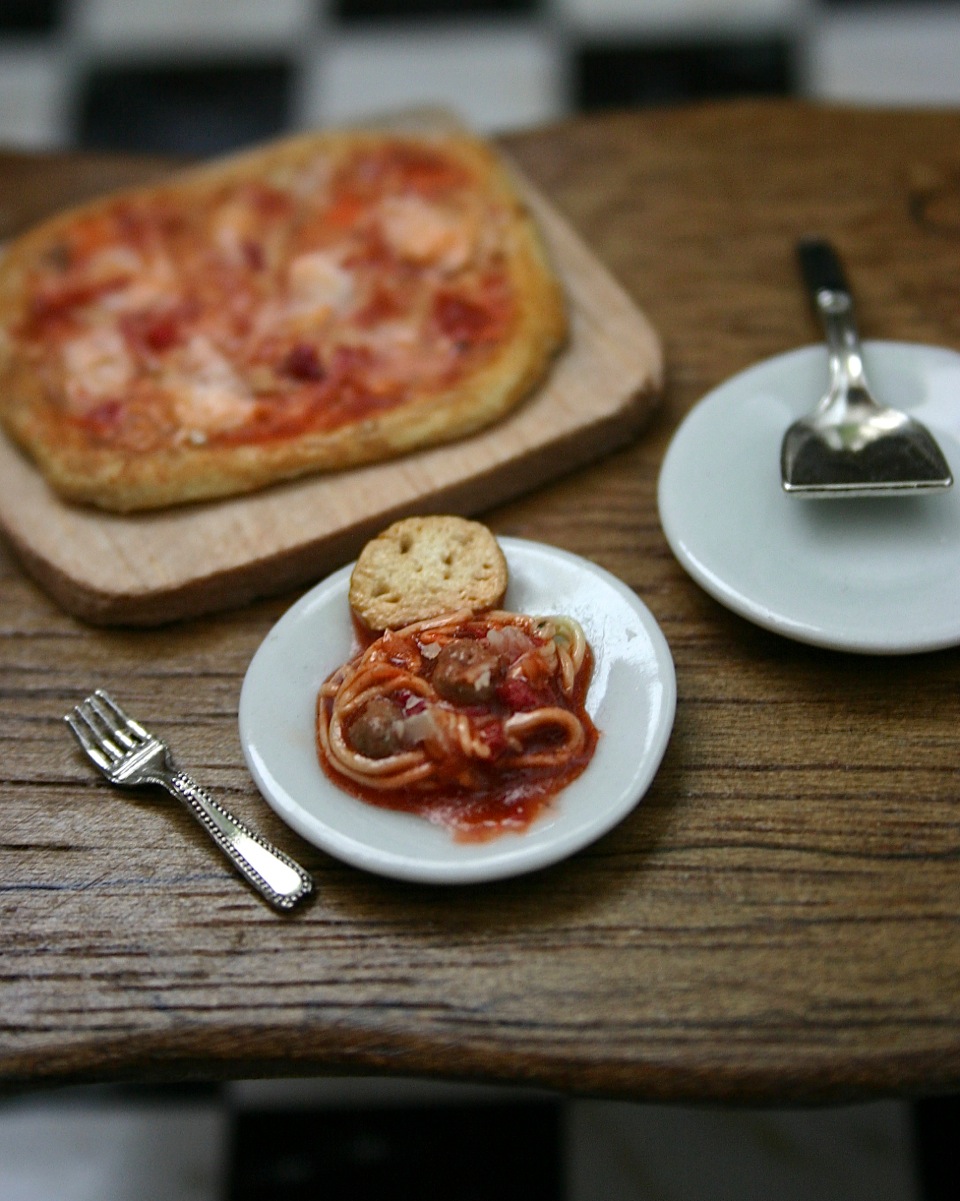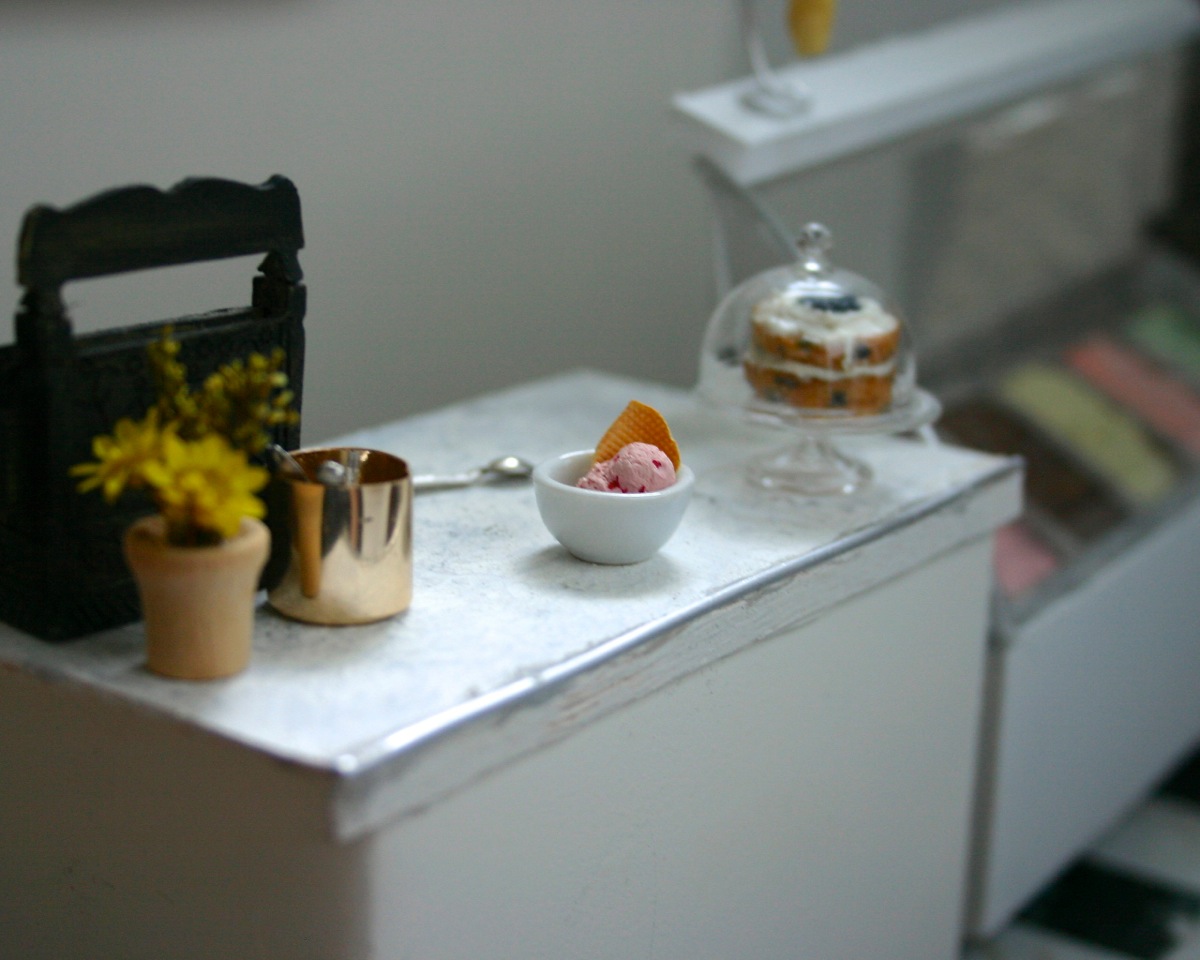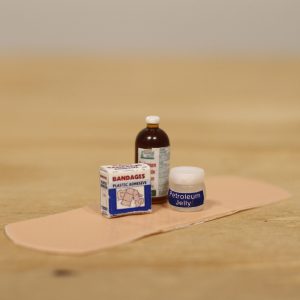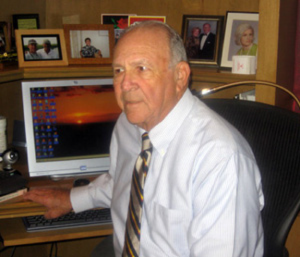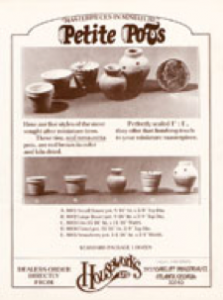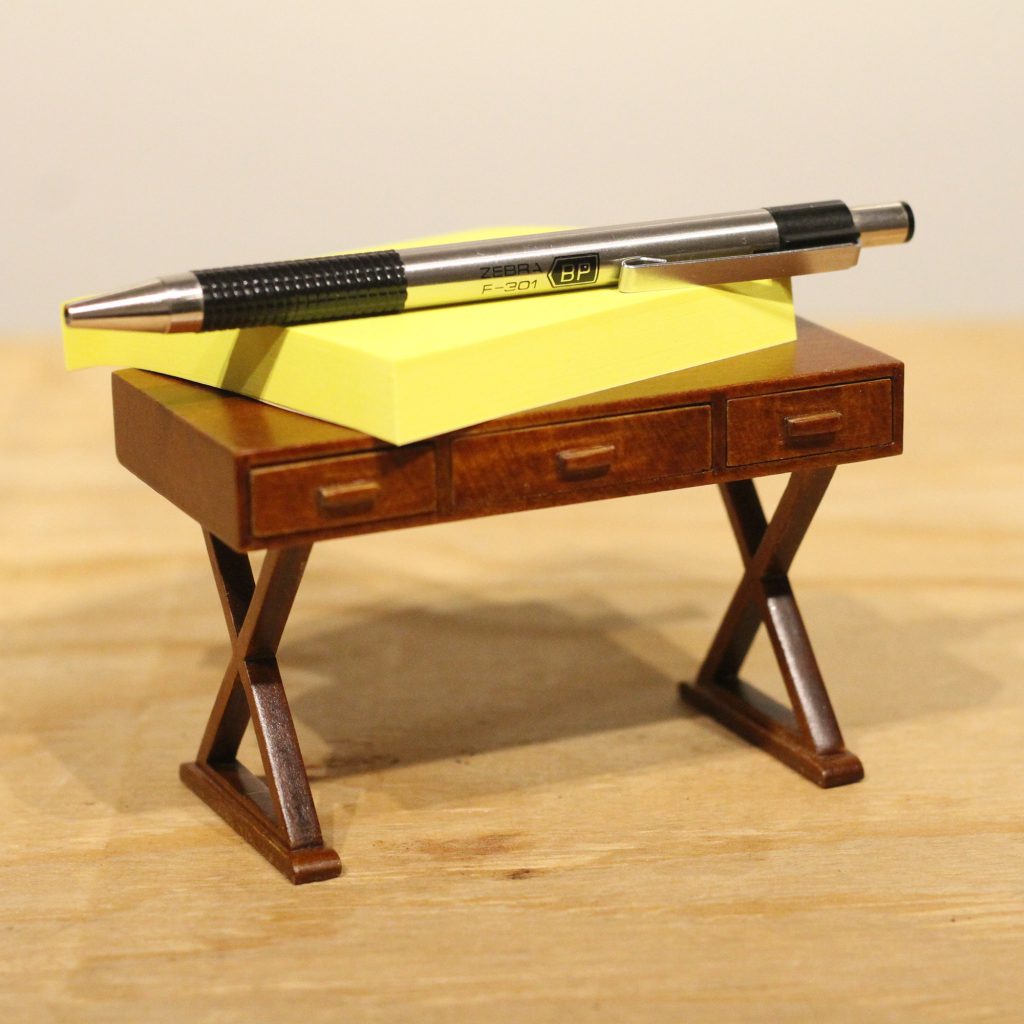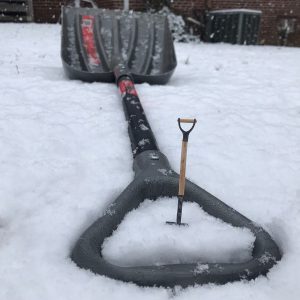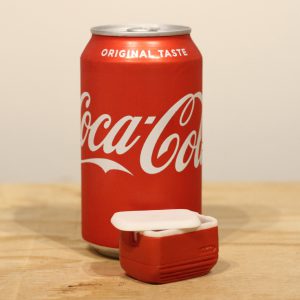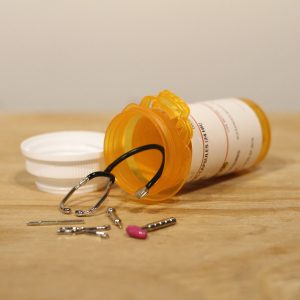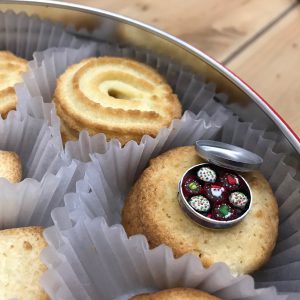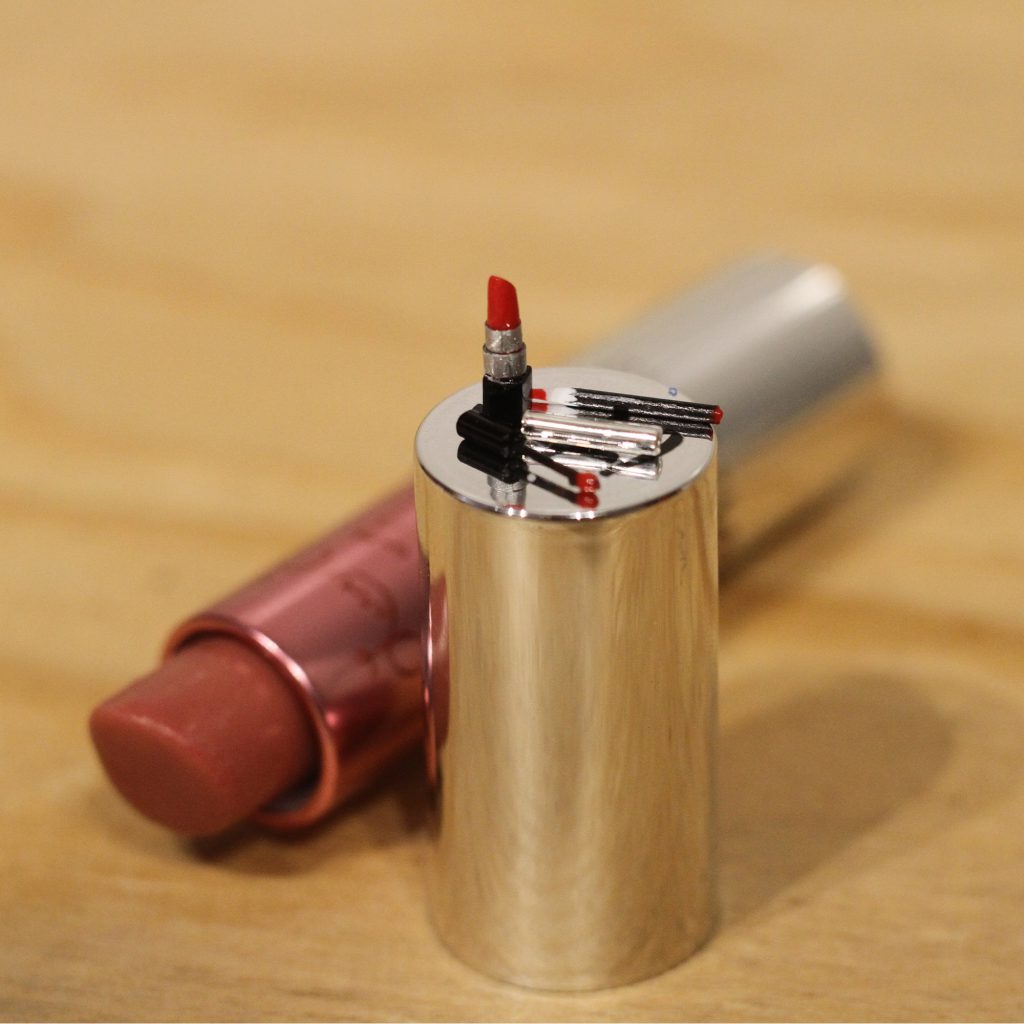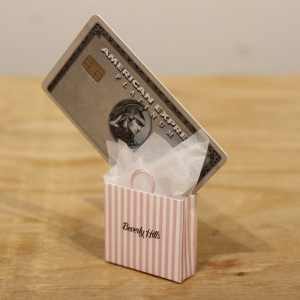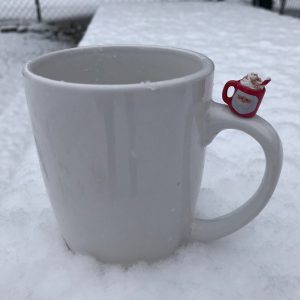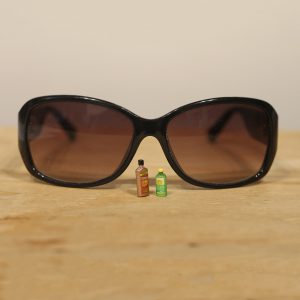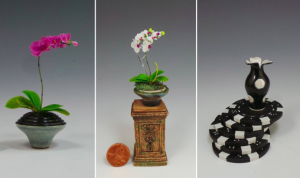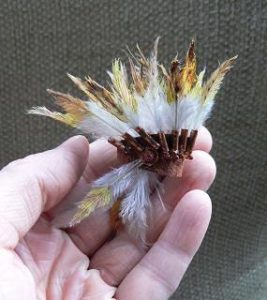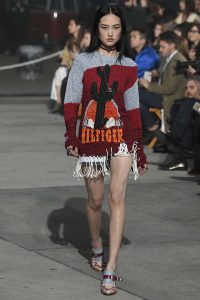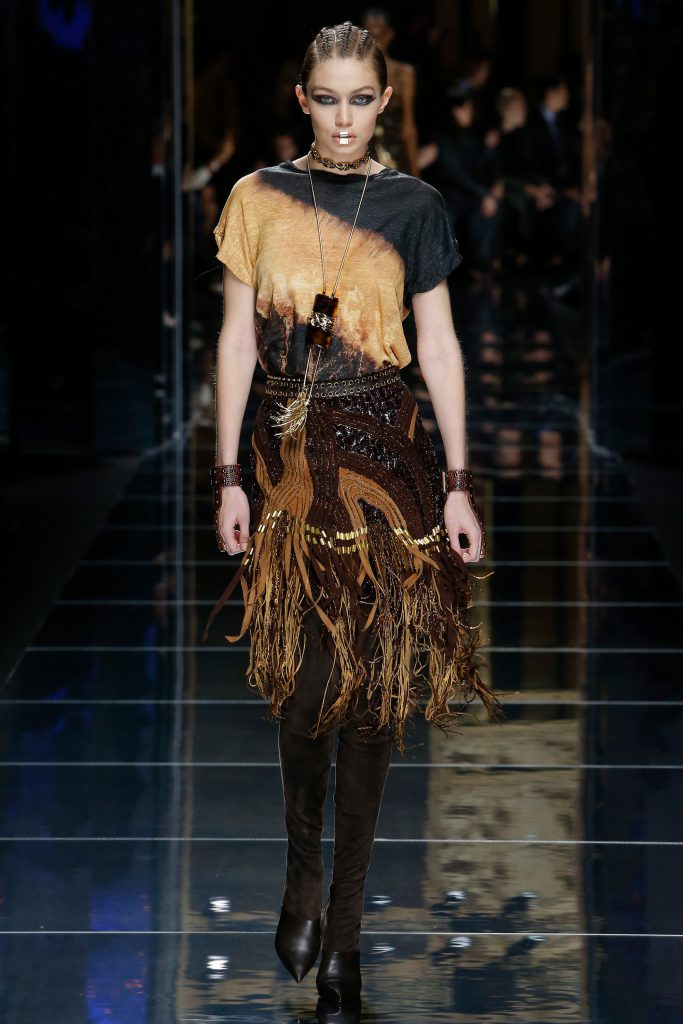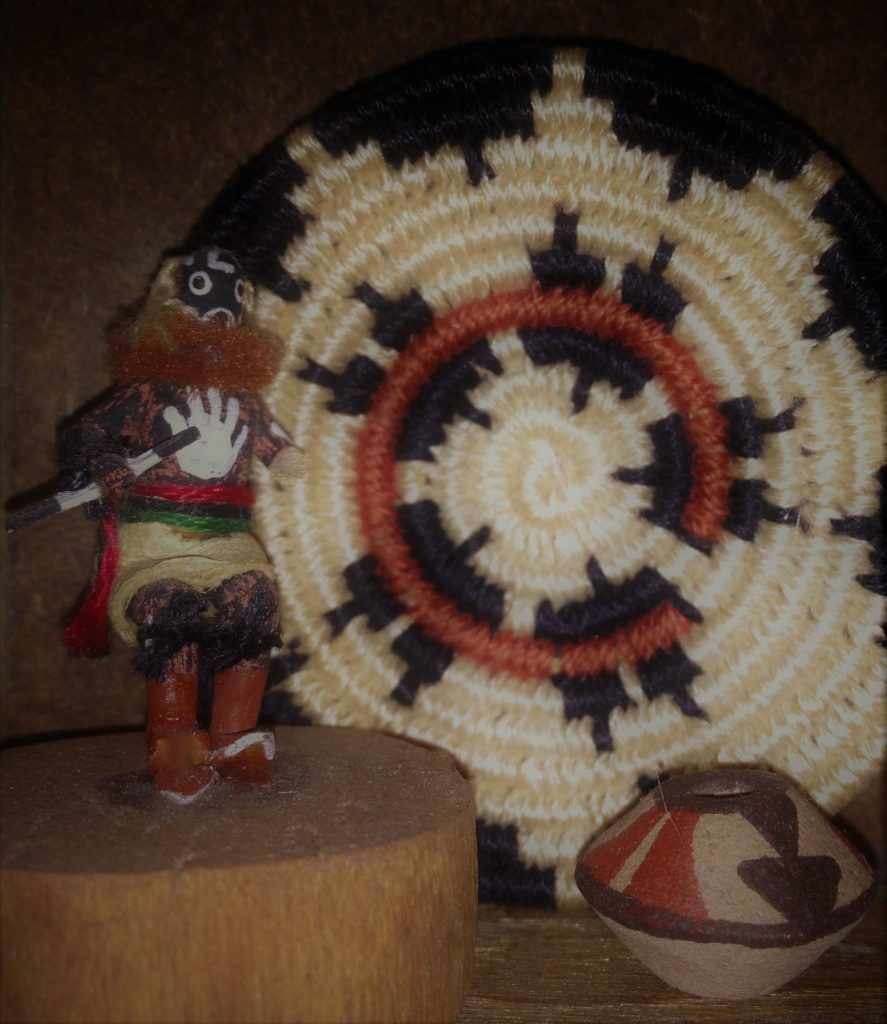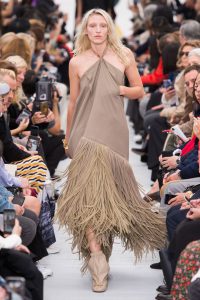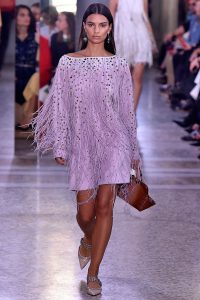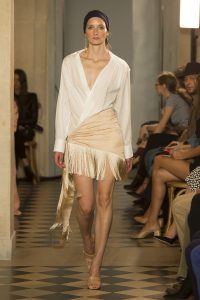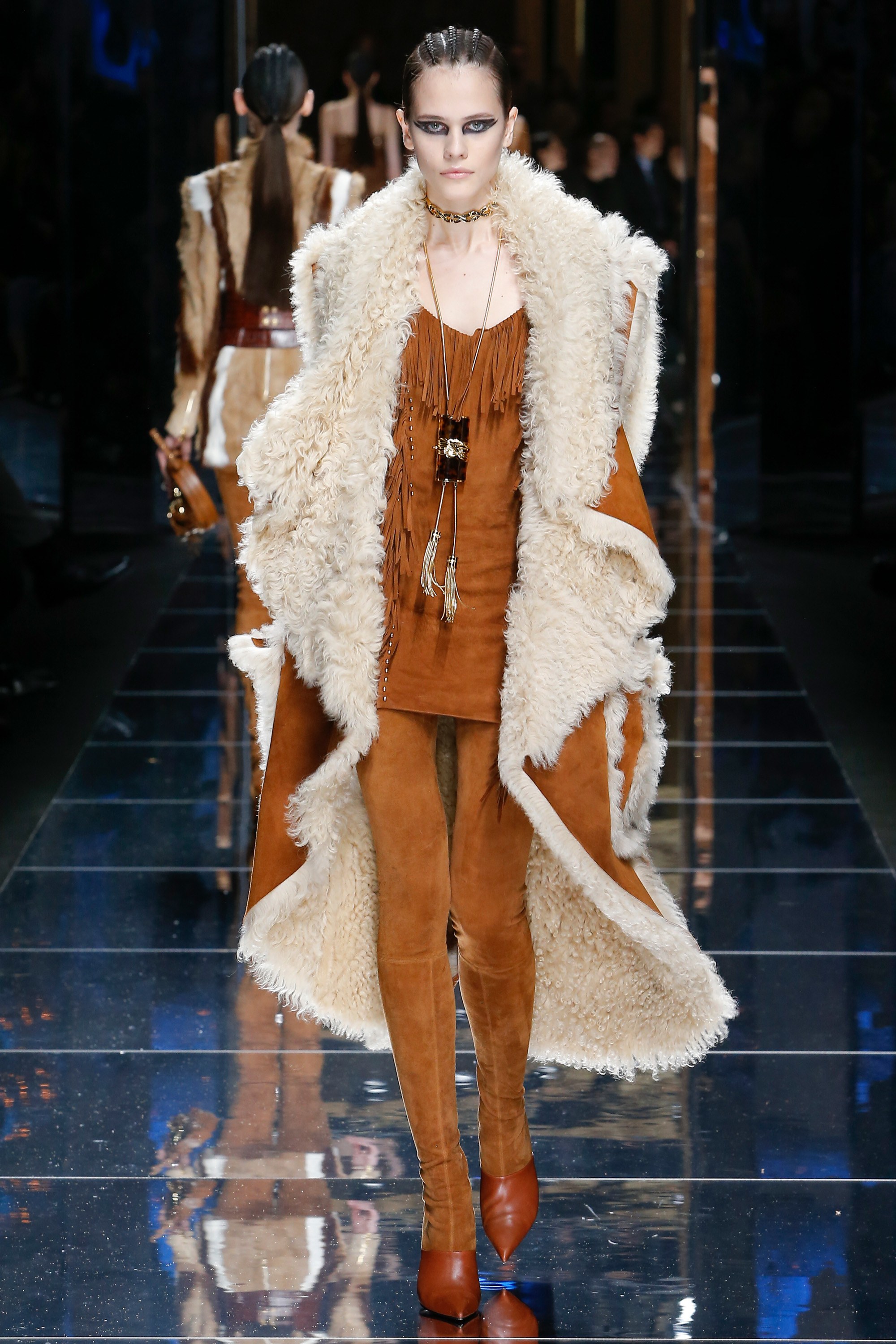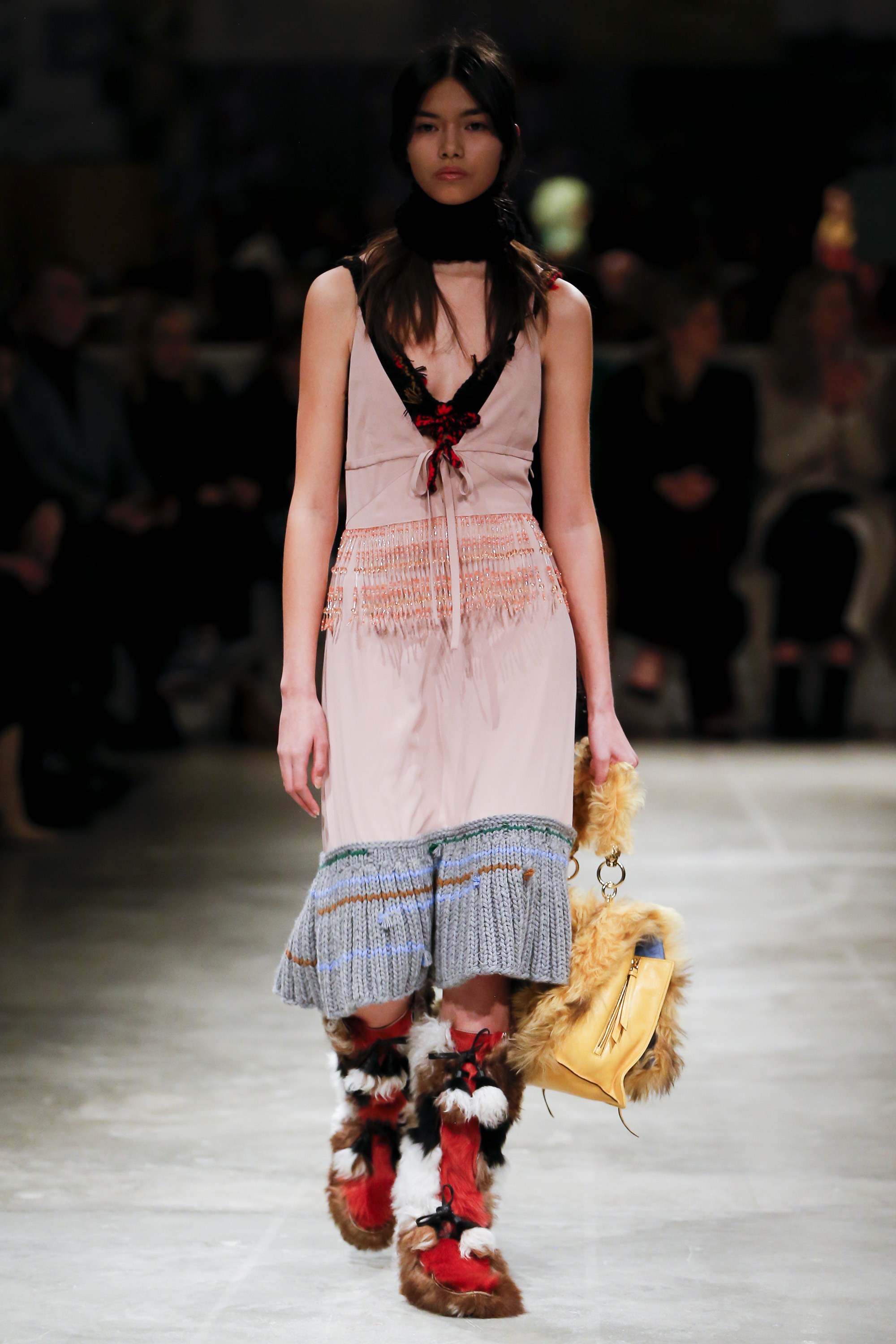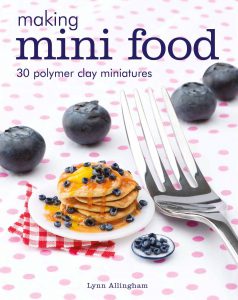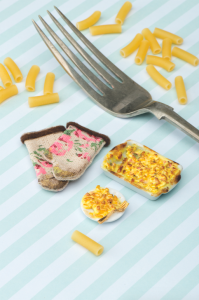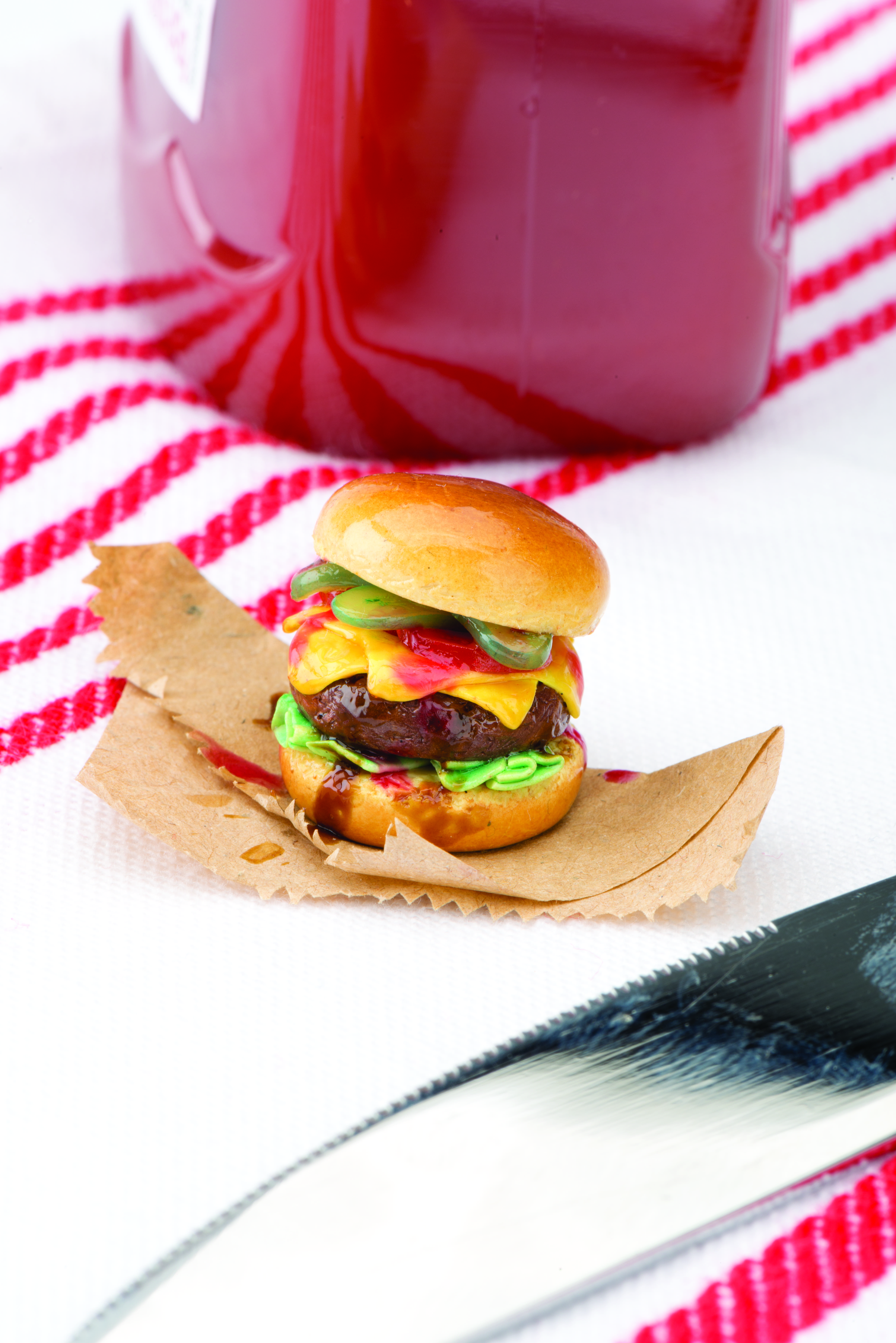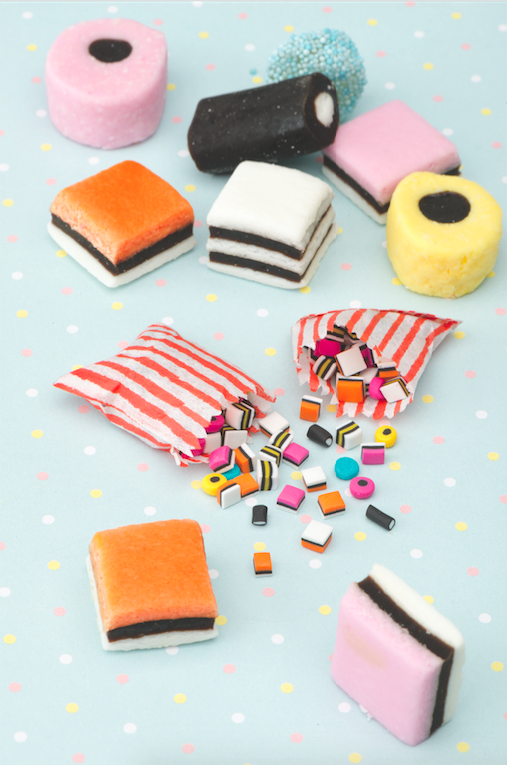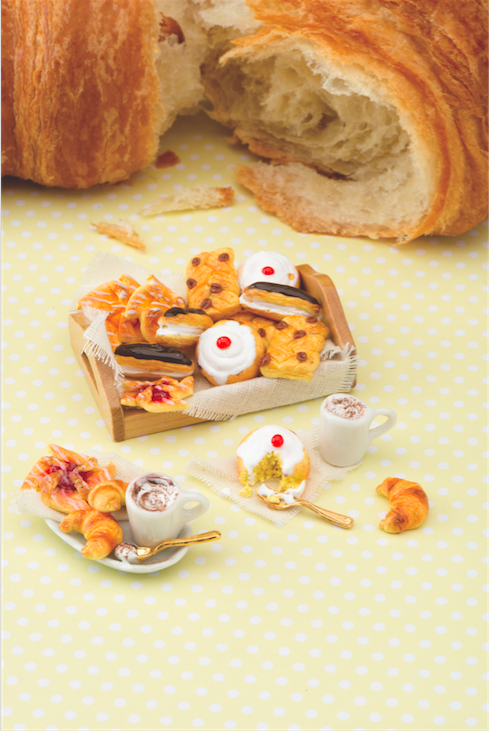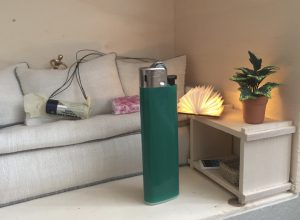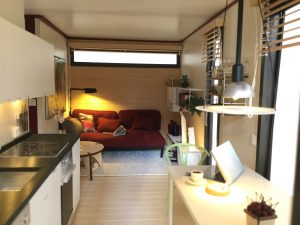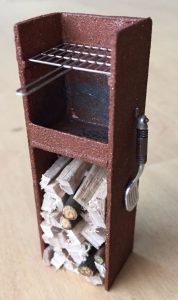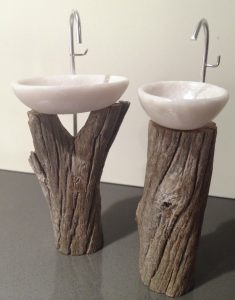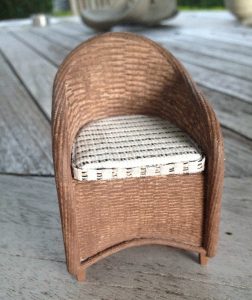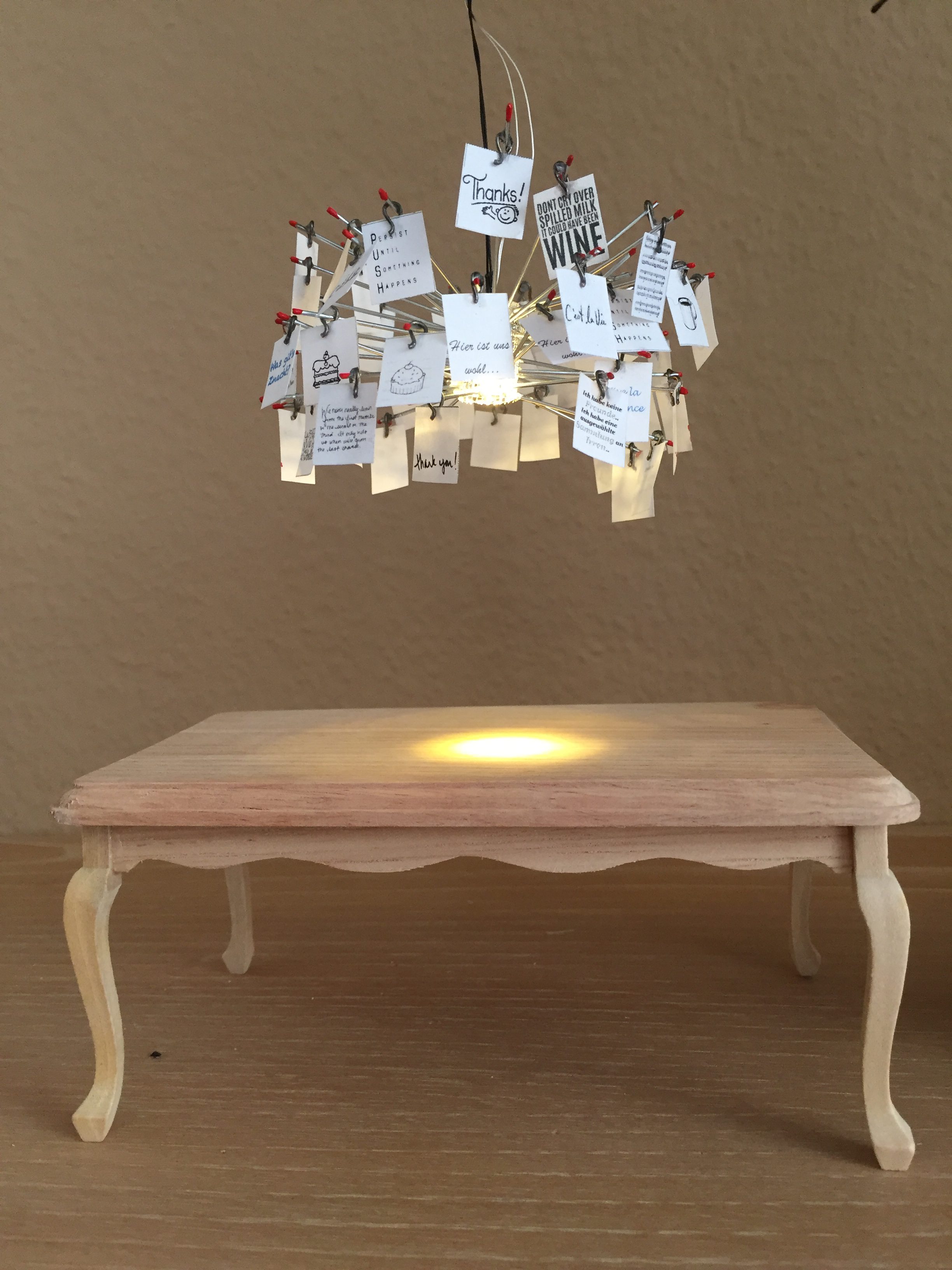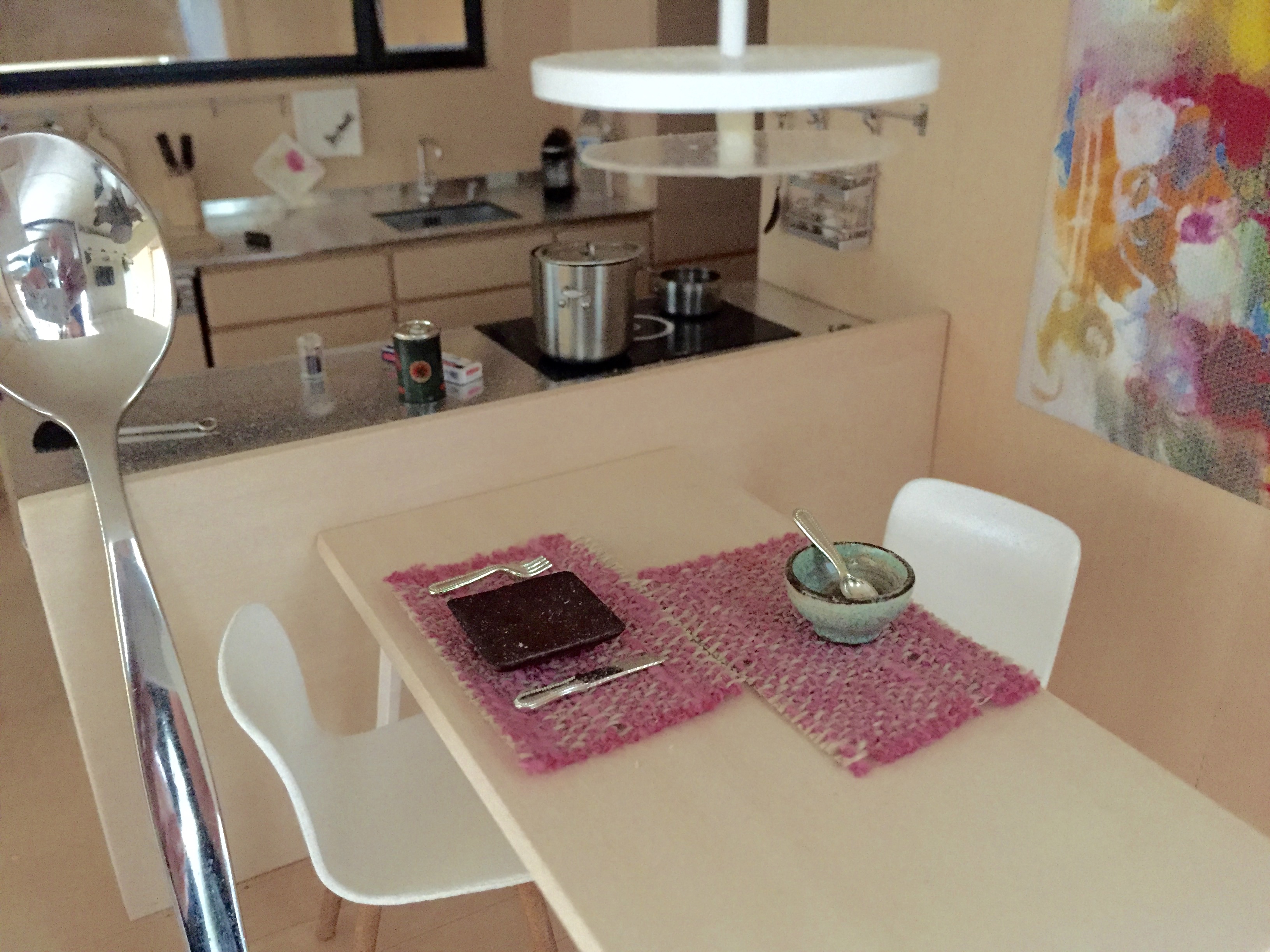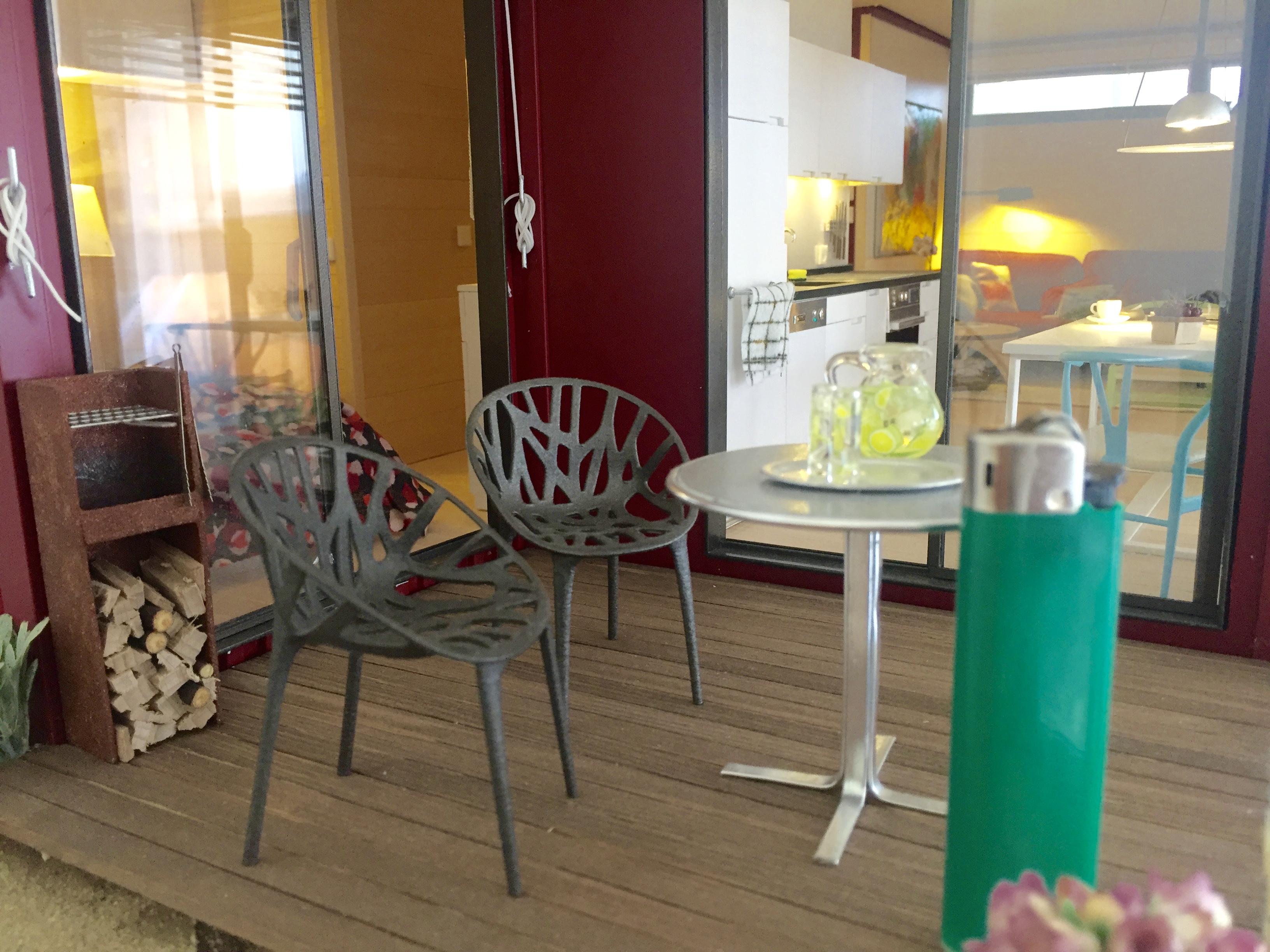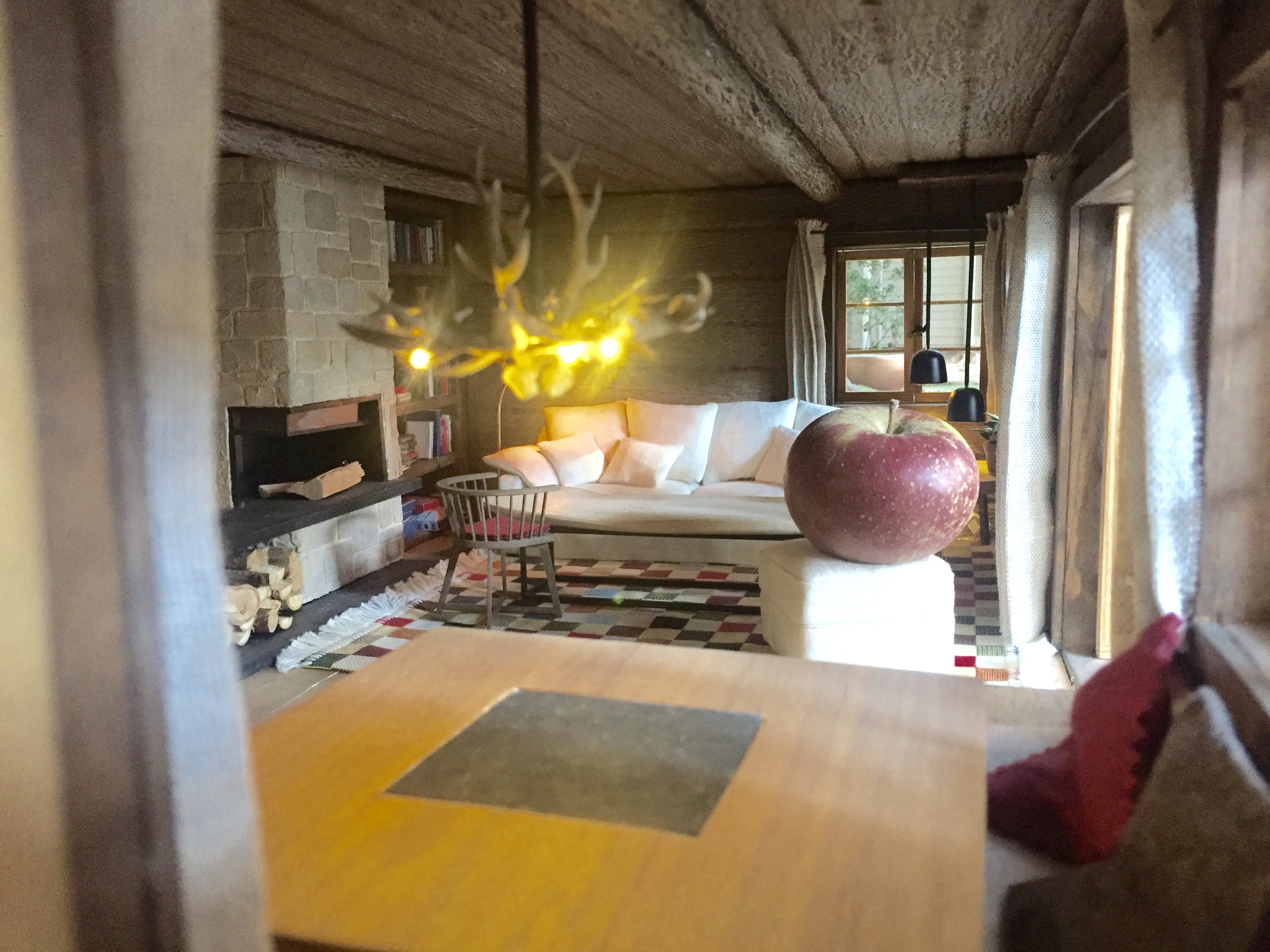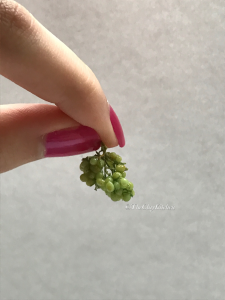The Whatamagump by Bryan McIntyre and Greg Boettcher of Broken Eagle, LLC
| Website | Instagram | Facebook | Kickstarter |
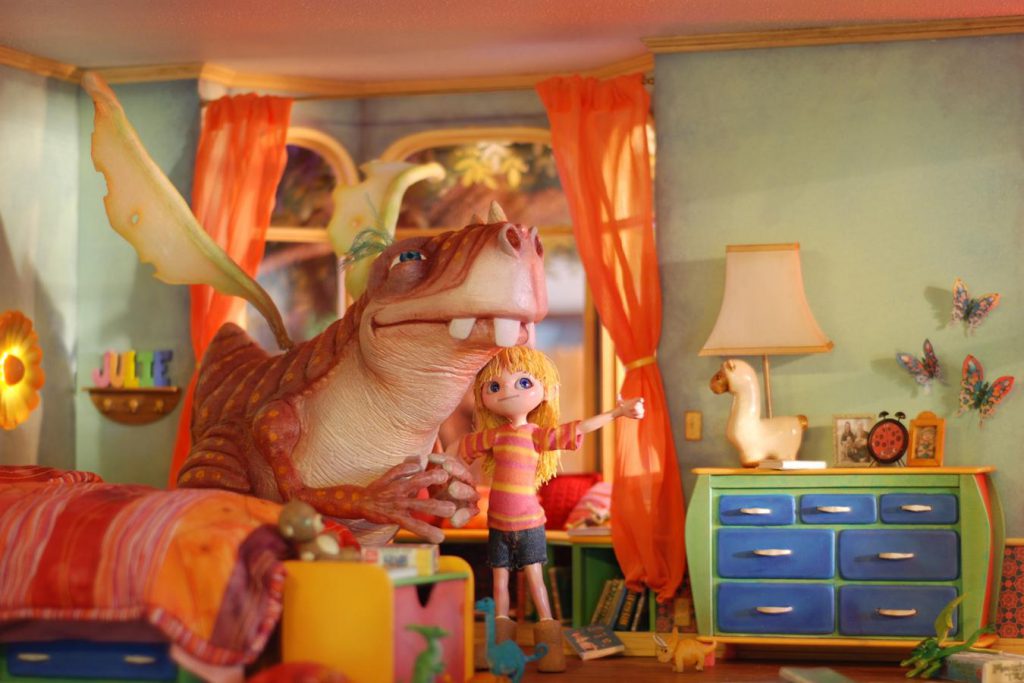 What are your earliest memories with miniatures, stop motion animation, or small scale worlds?
What are your earliest memories with miniatures, stop motion animation, or small scale worlds?
Bryan McIntyre (BM): My first memory involving miniatures and stop motion are Gumby and Rudolph the Red-Nosed Reindeer, but the first time I remember being spellbound and inspired by the medium was in the late 80s at a Spike and Mike animation festival where I saw the first Wallace and Gromit short, A Grand Day Out by Nick Park. I still love that one so much!
Greg Boettcher (GB): Growing up in the early 70s, there were quite a few mediums using these techniques, I remember View-Master translating cartoons into miniature sets and puppets, the old fairy tale books used the same style. One of the more exciting instances of that technique was at Disneyland, in the windows on main street. I was always fascinated by those; I loved seeing these frozen moment in time of things that didn’t exist. The earlier stop motion TV specials were always fun too: the Ray Harryhausen stop motion films and all the rubber monsters from Japan like Godzilla, Gamera, Ultraman, and Giant Robot. I was also inspired by a lot of sci-fi and adventure shows like the old Flash Gordon, Doctor Who, and Space 1999. Then Star Wars came along and that changed everything.
How did you get into the field of songwriting and storytelling?
BM: I was a professional musician and songwriter for many years prior to moving in to art, but in my experience so far, I’ve found the same part of the brain makes it happen.
Where do you draw your inspiration from?
BM: Inspiration for me generally comes out of nowhere – it’s more a matter of cultivating random thoughts that pop in and out of my head. I’m usually looking for something I’ve never seen or heard of before.
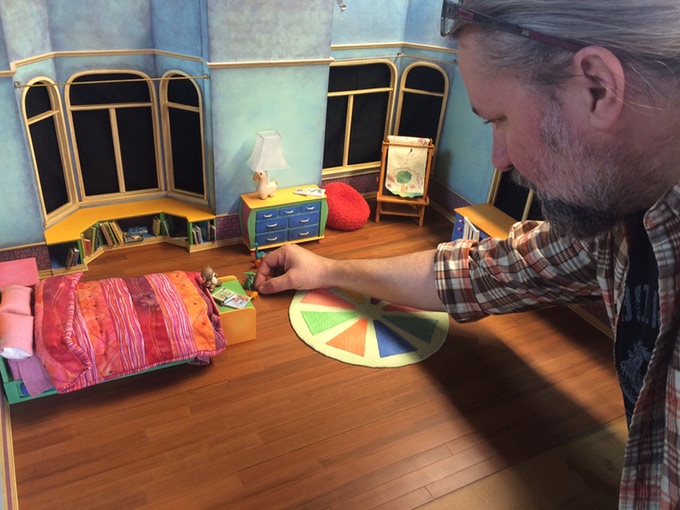
How did you first get started in film and TV? And how did you end up connecting with the team over at Laika Studios?
BM: I was suffering fallout from the recession a few years ago. After getting laid off and struggling to provide for my family, I decided that since choosing the ‘safe’ route didn’t seem to be working, perhaps I should try doing something I actually enjoyed doing. I’d already been sculpting for a few years and had taught myself molding and casting techniques when LAIKA came out with their teaser trailer for ParaNorman. I remember saying to my wife that working on a film like that would be about the best thing ever.
Three months later we packed up the kids and moved to Portland with no job prospects and no money. Probably not the most responsible move, but nothing responsible was working out at the time, so we figured “what the hell, it can’t get any worse.” Three weeks later, I got a job at LAIKA in the facilities department and a couple months after that, moved into the Art Department as a PA for The Boxtrolls. That film was so incredibly prop heavy; they needed all hands on deck and I finally got moved into the model shop making props. That’s really where I discovered I’d been doing everything wrong up till then.
I grew really quickly at that point because I was working around some the best model makers in the world and had access to the best techniques, tools and materials. The model shop crew were all incredibly kind and generous with their knowledge and I’ve maintained great friendships with many of them ever since. It was a very exciting time for me.
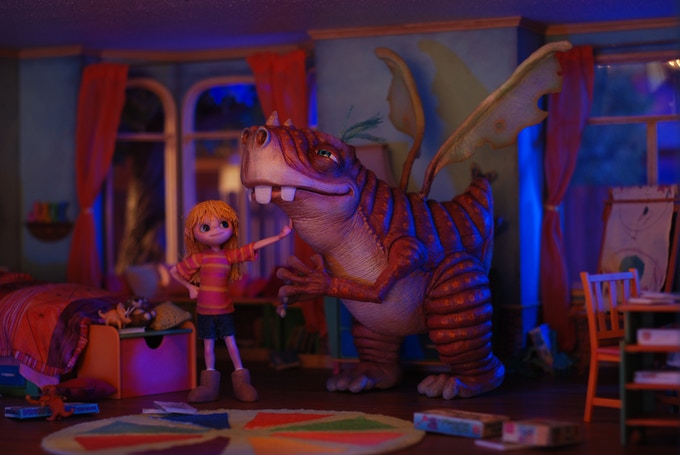 GB: Always drawing from my childhood influences, growing up in a time of model kits and toys, I gravitated toward those industries, I had been an off and on freelance illustrator for a few years but needed something more.
GB: Always drawing from my childhood influences, growing up in a time of model kits and toys, I gravitated toward those industries, I had been an off and on freelance illustrator for a few years but needed something more.
I went to art school, realized I knew quite a bit already, but used the time to build up my portfolio and try things that I hadn’t had the luxury to try before. From there, I moved back to LA and started working as a model maker on feature films. I worked for a number of different companies — New Deal Studios and Grant McCune Design mostly — did some toy prototype work, some stop motion TV, spaceships, giant miniature landscapes, sculptures, some concept work, and lots of things that got blown up. Years later myself and a number of my colleagues were hired to work on ParaNorman. I lead the model making dept. It was a very exciting experience. after that I started working for House Special doing commercial work, and worked on some friends’ short films until starting Broken Eagle.
Favorite film or TV ad you’ve worked on?
BM: I’ve got three:
- The Boxtrolls (for reasons mentioned above).
- A 3-D remake of Rudolph The Red-Nosed Reindeer. Rudolph was really cool because I got the lead sculptor position and sculpted the inside and outside of the Abominable Snowmonster’s (Bumble) cave – it was 6 feet tall. It was a truly nostalgic piece for me to make having grown up loving the original movie so much.
- My favorite ad spot so far was for Häagen-Dazs. The spot was called Maker Street and it was very ambitious and elaborate: 15 sets, tons and tons of props. Commercials are a lot of fun because the timeframes are so tight. You have to get really clever about how your time is spent on each piece and constantly consider where you can cut a corner without negatively effecting the aesthetic of the prop or shot.
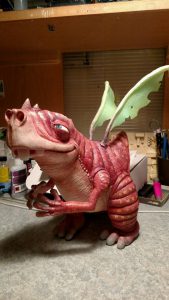 GB: My favorites so far have been:
GB: My favorites so far have been:
- Serenity at Grant McCune Design. I was the lead on the main building of the ship, and I also did a lot of set dressing in the hangar that it crashes in. The amount of fun, detailed model making, combined with most of the crew and I becoming fans of the TV show while on the job, made this one especially exciting and my favorite project.
- The Fountain at New Deal Studios. I was lead sculptor and tree maker for the space tree and the full bloom miniature trees. Coming up with so many different ways to achieve textures and replicate the full size set pieces was a fun challenge.
- ParaNorman for LAIKA. This was a challenging project with so many moving parts. The amount of items we made and techniques that were used and design challenges we faced made this one stand out. I really enjoyed the constant juggling act and working in the style of that film. Plus, the finished product was beautiful.
What went into the founding of Broken Eagle Studio in 2014?
BM: After working a couple of jobs together, Greg and I just realized that we really loved a lot of the same stuff about this industry and also had the desire to originate our own work as opposed to always being a hired gun waiting for the phone to ring. I came up with the idea of creating a high-quality, limited edition merch product for my buddies in a great band called Rival Sons. I think it was Greg that came up with the concept for the piece we ended up making. After a few concept illustrations, we pitched it to the band and they loved it. We were off and running!
GB: I met Bryan running a commercial job for Bent Image Lab and we hit it off. I later hired him to help me on a project I was running out of my garage shop and it was during then that we started coming up with how to team up on some project ideas. He had some ideas about reaching out to some friends of his in the music industry, The Rival Sons, so we R & D’d that project from concept to the final products.
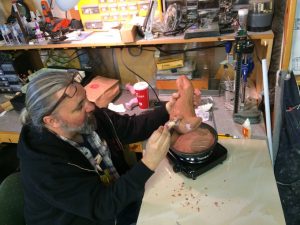 How did the idea for The Whatamagump first come about?
How did the idea for The Whatamagump first come about?
BM: Greg and I had a mutual fantasy of creating a modern children’s book with artwork that was all handmade and three-dimensional. I’ve been calling it ‘Stop Motion Without The Motion.’ We kicked around several ideas and decided it might be better if we focused on the artwork and producing the book itself and bring in someone to collaborate on the writing side. My old friend Tyrone Wells is an amazing singer and songwriter; his live shows are filled with great stories surrounding the songs he’s performing. He’s a fantastic storyteller. Being a father himself, I kind of thought that his style, sensibility and stage of life made him the perfect guy for us to partner with.
We pitched it to him simply: “you write the story and record a few songs and we’ll create the artwork and produce the project.” He came up with the story concept and the name “The Whatamagump” pretty quickly and we knew we had a winner. That name was so perfect and catchy that everything else fell together quickly after that.
It has been an absolute blast for us to see this idea become an actual physical reality. He was truly the perfect guy to partner with for this project.
GB: One of the first things we talked about doing when we started Broken Eagle was doing a stop motion styled children’s book. It was both of our passion project wish list item for many years. Bryan reached out to Tyrone to team up with us and write the story and we took his first draft and started designing and creating this world. I started with some character designs for Julie and The Whatamagump. Once I sketched him out the first time we all knew that this was going to be something special.
 What is your collaboration process like?
What is your collaboration process like?
BM: I usually fall into the role of Producer and Greg art directs and designs everything. We both fabricate and sculpt. There is definitely overlap too though. We have very distinct and differing abilities in areas, and we’ve learned to respect and gain from each other’s insights or ideas pertaining to just about everything. The Whatamagump process went like this:
- “Let’s make a picture book!”
- Tyrone wrote part of the story
- Greg illustrated several different character ideas; we all decided on one
- Greg designed Julie’s room and every detail in it
- I built most of it and sculpted Julie
- Greg sculpted Whatamagump
- We worked with Tyrone to message the story into something that flowed well from a visual standpoint
- Greg and I then discussed elements of each scene
- Greg storyboarded it
GB: It changes depending on the project, I usually sketch out some ideas on how to make something then we bounce that back and fourth figuring out materials, scale, budget and techniques. Bryan works out bids and production work. We both fabricate and sculpt and I do most of the painting.
For The Whatamagump, once I had some designs for the monster and Julie, I started set designing her bedroom. Then we made a foam core mock up and tested out the space and scale. I started pulling up prop and furniture references and color schemes. Bryan took that information and started fabricating. I also made some props and all the illustrated objects (like book covers and board games). After that, I started sculpting the ‘Gump, and Bryan started the Julie sculpt. We both made the molds and castings. Bryan made the clothing and the hair and I did the painting. We both lit and shot the photos.
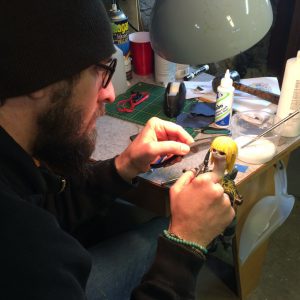 What are some challenges associated with this project?
What are some challenges associated with this project?
BM: My personal opinion is that the biggest challenge is already behind us. It was mental. When you’re doing something brand new with no promise of success, and many people telling you “it’s a neat idea, but it’s impossible,” it’s challenging to stay positive and keep chipping away toward your goal. I don’t know how many hundreds of hours we’d put in to this project before Kickstarter even launched, but it was a lot! Believing against all odds that we could fund this book was a test in tenacity. We’d been working on this for 1 year before Kickstarter came into play. Personally, I just didn’t care what anyone thought. I was going to make this thing happen. Period.
GB: We knew it would take a lot of time and money to achieve something so ambitious, so finding a way to make that work was the tricky part. Once we all landed on Kickstarter, it was all an unknown what would happen. we had faith in the project but ultimately we didn’t know if everyone else would. it was really great watching the reactions to it.
The timing also had to work out with our and Tyrone’s schedules. Tyrone was on tour and launching his new album so we had to wait for that to settle. We had some projects going on as well, so it was a hectic time.
The Whatamagump is a lovable, timid, and adorable creature. Is there anything about this character that won’t make it into the book?
GB: As for who or what he is, it is kind of a mystery. In the shop we called him “Gump.” Not sure if he likes that or not. He is a little magical and comes from a world where monsters aren’t so rare or scary.
What about Julie’s backstory?
GB: Julie is a huge fan of monsters and fairy tales and dinosaurs. Her favorite fake show/movie franchise is called Dinos for Cars. She’s got all the toys and books and probably watches the movie at least once a week. We never mention it but you can see her fandom showing in her bedroom.
What scale is this project in?
BM: It’s 1:6-1:7th scale or so, which is generally the size for stop motion. It’s an excellent scale in that it has the charm of being miniature, but things are still big enough that you can build lots of great detail into your pieces and at a reasonable pace and it all translates comfortably to close up photography.
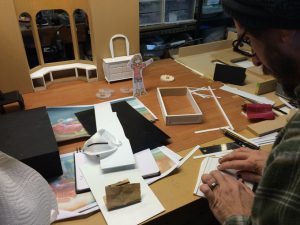 Are all the miniature props used in The Whatamagump made by hand? Is the work of any other mini artist featured?
Are all the miniature props used in The Whatamagump made by hand? Is the work of any other mini artist featured?
BM: Nearly everything is completely fabricated by hand from raw material: compressed foam board, wood, Styrene, paper, brass, etc. I think the only place we are making an exception and used something ‘off the rack’ is the Whatamagump and Julie’s eyeballs. They are so affordable and style-wise exactly what we needed that it just made more sense and saved a lot of time.
Our development photos include fabric and sewing work by our friend Brandi – she did all the bedding, pillows and curtains. Our friend Leigh, a scenic painter from LAIKA, also popped by to check things out and wound up getting her hands dirty by painting the walls.
It’s kind of funny – we had LAIKA expats from Coraline, ParaNorman, Boxtrolls, and Kubo working with us, as well as a few amazing artists we’ve worked with in the commercial industry. Quite an incredible crew – we’re very fortunate!
GB: We try to make everything we can by hand. We use any trick we can to make things. We make molds and patterns so we can replicate things that would otherwise take too long to achieve. We kit bash sometimes and have been known to use laser cutting from time to time.
A few artists joined on the production: sculptors, mold makers, painters, and seamsters. These are people in the art community and people we’ve worked with on various jobs around town.
We knew that we would need help to make the book in a reasonable time and it was always the plan to bring in the local talents.
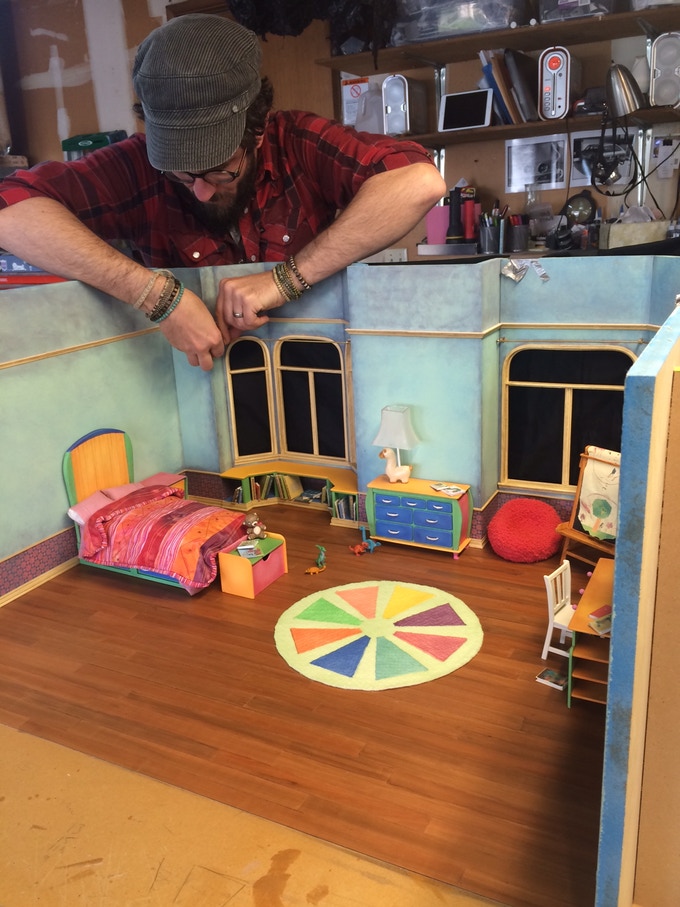 What was the very first miniature you made for The Whatamagump?
What was the very first miniature you made for The Whatamagump?
BM: Our very first miniature was Julie’s dresser, I believe. Greg designed it and I built it. It actually had a vanity mirror attached to it for a while, but we ditched that idea because mirrors are notorious for causing camera and lighting problems.
How many Julie and Whatamagump figures exist?
BM: Besides the 4 prototype Whatamagumps (initial prototype and 3 contest giveaway dolls) and 1 completed Julie (prototype), we’ve got 25 Gumps sculpted and painted by Greg.
Julie is a little easier, but still requires wigs and clothing to be sewed. We made them modular so that we could mix and match parts for different scenes. Resin castings were modified with Dremel tools and Magic Sculpt or Pro Poxy in order to make their expressions and poses appropriate for each specific shot.
Will a Whatamagump figurine be available for sale in the future?
BM: Absolutely! Tyrone currently has the first prototype Whatamagump doll at his house. That’s the doll you’ve seen in all of our pictures leading up to Kickstarter. I think it’s a fitting home – his kids love having it too!
How can fans get their own copy of The Whatamagump book?
BM: People can pre-order the first edition copy of the book now.
Favorite (children’s) books?
BM: Where the Wild Things Are, Dr. Seuss, and Shel Silverstein’s work are my favorites. Goodnight Moon has become a nostalgic favorite too, after reading it many times to both of my children when they were little.
GB: Anything with dinosaurs, The Mouse and His Child, and anything with spaceships. I read a lot of Andre Norton as a kid but the one that started it was the The Day of the Ness. My all time favorite (I still have my original copy) is One Monster After Another by Mercer Mayer.
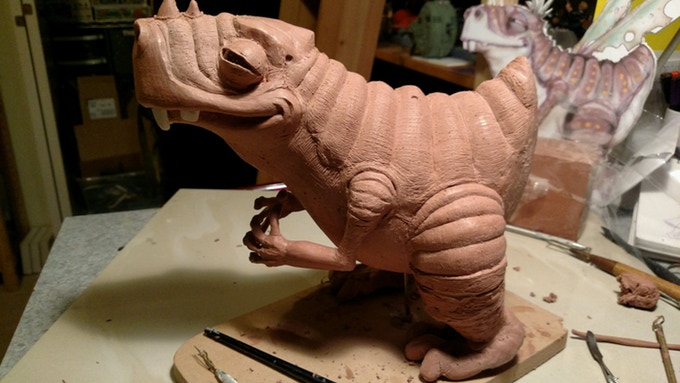 Career highlights you’d like to recount?
Career highlights you’d like to recount?
BM: Boxtrolls, Häagen-Dazs commercial, Rival Sons, and The Whatamagump of course!
GB: The previously mentioned Serenity, The Fountain, and ParaNorman also getting to work on a Star Trek movie. Winning a Visual Effects Society award for outstanding miniature for a Halo 3 commercial. And getting to make this book — it’s something I’ve thought about for many many years.
What did you learn about Kickstarter fundraising?
BM: I would just encourage anyone who wants to do it to really develop a plan and consider yourself as having a second time job for the duration of the campaign. Just because you have a good idea and have supportive friends does not mean enough eyes will see it. It takes a lot of work and continual cultivation of your audience and leveraging your audience to find new supporters during a brief period of time. It’s exhausting!
What advice would you give to those with a passion for storytelling, songwriting, and singing?
BM: Keep doing it! If you haven’t started yet – start!
I think it is easy to discourage one’s self by admiring someone else’s work or music and think “I could never do that.” But the truth is – you totally can… but frankly, you have to be willing to suck at it first. Being diligent is the only way to improve and regardless of your age or background, you totally can!
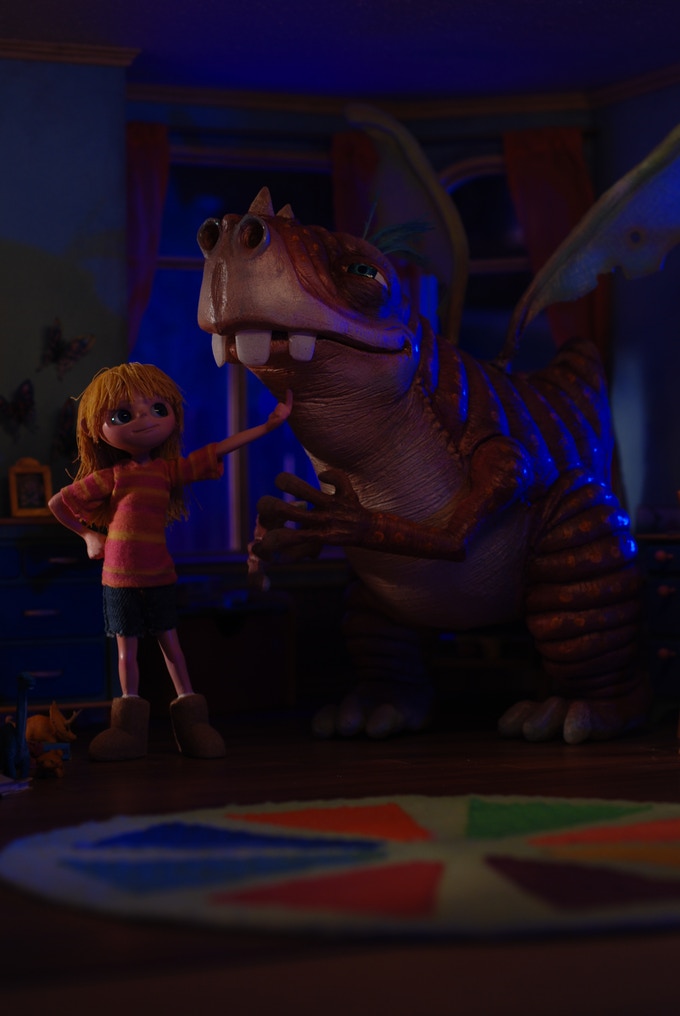 What advice would you give to those interested in a career in film/TV set or prop design?
What advice would you give to those interested in a career in film/TV set or prop design?
GB: It can be a very up and down industry. Learn as many tools, programs, techniques, and methods as you can. Be versatile.
BM: Top Ramen tastes better with Sriracha.
What about advice you’d give to mini-focused makers?
BM: Always look for new materials, tools and techniques to incorporate into your arsenal. They don’t have to be traditional either. When I go to the hardware store, I’m rarely looking for something that I will use for its intended purpose.
GB: Think about how you would replicate something at different scales. I don’t believe there is only one correct way to do any of it. There are a lot of great techniques out there but I like finding new ways to make things all the time. Whether it’s molding something with texture that would make an excellent miniature version of something completely different, or finding a tool that if used differently makes a neat result, sometimes it’s just a weird paint trick, thinking outside the normal box can get the neatest results.
Any miniaturists out there whose work you especially admire?
BM: Most of my association with miniaturists is related to stop motion. That said, co-workers on various jobs are always inspiring because everyone has their own way of doing things so it’s fun to pick up a new trick or two when I work with them.
I’ve really gotten in to our Instagram community too. I love Ryan Monahan of @what_thehell – his stuff is just incredible every time. He takes the detail and scale to a whole new level. And @damienjameswebb has been a blast to watch also. He’s amazingly prolific and his growth since he started his account is mind boggling. I also find his work to be really whimsical and fun too. @Axelortenblad is another one who blows me away. His stuff his museum quality – it’s perfect. His work on organic miniature sculpts in particular. There are really a ton of folks out there – too many to name.
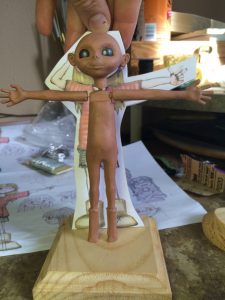 GB: From the old days: Harryhausen, the original ILM guys and all the talented people that followed after. Many of the amazing people I’ve worked within the industry.
GB: From the old days: Harryhausen, the original ILM guys and all the talented people that followed after. Many of the amazing people I’ve worked within the industry.
I’ve been following a few guys in Japan for a number of years: Yatasith, Rokugan, and Dorobou Hige. They do mostly kits featuring Star Wars and some Japanese sci-fi. They always amaze.
The amount of new artists I’ve seen in the past few years on Instagram, Facebook, and some of the art and model making sites has been amazing.
I’ve been enjoying the work of: FitchenFoo, Ellen Jewett, Daniel Agdag, Harry Arling, and Miss Monster.
What inspires you and keeps you creating?
BM: I’m inspired by challenges. I get incredibly bored if I have to do something I’ve already done, be it a prop build or a project of one kind or another. I’m always looking for an opportunity to do or make something I’ve never seen before.
There was a musician I worked with when I was 19 who was 10 or 12 years older than I was at the time. He was talking about approaching instrumentation for a song and said, “I always look to the first thing that comes to mind and then try to come up with something completely different that still works.” I think I’ve carried that philosophy through my life with everything I’ve done since.
GB: I find most of my inspiration in dreams while sleeping. So naturally I’ve forgotten much of it.
Words you live by?
BM: Don’t know how to do it? Figure it out!
GB: Remain true.
What is the most memorable miniature you have ever seen by another artist?
BM: With platforms like Instagram and Facebook, I’m constantly exposed to others’ work that meets that description. I’m always humbled and inspired by the proliferation of talent out there.
GB: I think some of the work that Michihiro Matsuoka has been making fit into those categories. Also Ellen Jewett’s work is always inspiring and beautiful, unique, and odd.
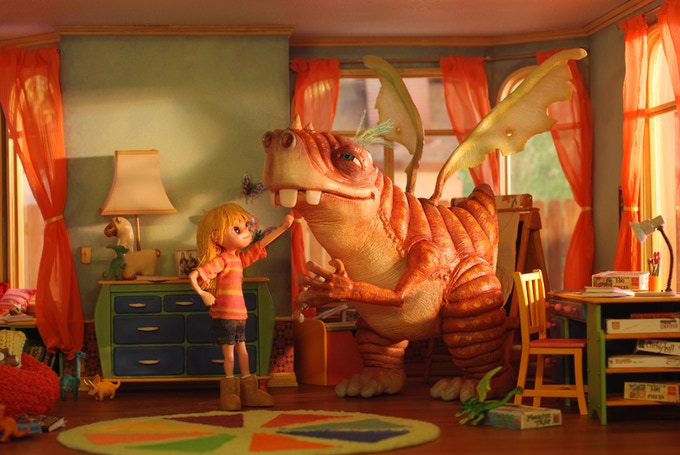
What is your hope for the field of miniatures and mini prop making?
BM: I’d love to continue seeing this resurgence we’re experiencing in handmade art. I feel like miniatures and their many applications are the perfect medium for it too. It’s pretty magical looking at a miniature that is sculpted well in that it skews the reality we’re all familiar with. Digital technology just doesn’t do it, at least for me. Handmade leaves a fingerprint of humanity and that’s what makes it special. I think support and interest in mediums like stop motion, dioramas, books, and places like dailymini that highlight these crafts are essential. There used to be this whole attitude of keeping trade secrets a secret, but I’m more of the mind that we should share it all so that more people are inclined to try making something too! It will keep pushing the medium into new places and hopefully more career opportunities for many passionate artists.
GB: I think there is a nice movement going on in the arts community right now, between the social media outlets exposure and the technology that’s becoming more readily available, I’ve seen a huge growth in the art and craft world with people trying the old standard techniques and the new digital options. The combining of the two seem to be taking on its own life.
I’m excited to see what sort of inventions spring out of what’s happening right now. I think the trick is not relying on the technology to replace creativity, but creatively using the technology to find new tricks.
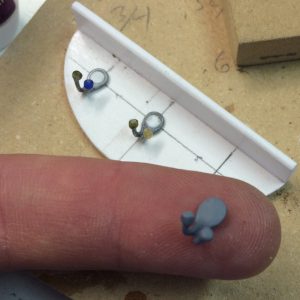 What’s to come from Tyrone Wells and Broken Eagle Studio?
What’s to come from Tyrone Wells and Broken Eagle Studio?
BM: Well right now, the art production, layout and music are 100% done. We’re working on the type treatment and taking extra care to make sure it is as good as it can possibly be. The team is now working together to refine story text details, getting the photos cleaned up and laying the book out for print. Lighting and photography officially wrapped in June. We started production on January 23 this year, but we’re still a few weeks away from having a book in hand. We’ve kicked around other ideas for the future, but I think right now we’re all just focused on the task at hand. We’ve actually been working on The Whatamagump in some capacity since August 2015. We’re just excited to finally be finishing it for real now!
What’s to come from The Whatamagump team?
BM: That depends on the interest and success of the book. We certainly hope to get some interested from some big players in publishing and distribution. If success and interest allow it, a sequel would definitely be fun!
Would you like to share a dailymini exclusive with readers?
BM: I’ve only been working professionally for 5 years. I’m totally self taught, never went to school, and made the career jump around age 35 with a wife and two kids. If I can do it, so can you!
Prior to that, I was in the mortgage and real estate industry and database development. Prior to art, my creative medium was always music. I began playing guitar at age 11 and have recorded 3 full length albums (I dare you to find the music videos on YouTube) and sat in on a number of other sessions too. Life has not been dull.
GB: I’ve been doing this sort of thing all my life, professionally for 20 years. I often forget that what I do isn’t normal. But it should be.
Broken Eagle, LLC is the team of Bryan McIntyre and Greg Boettcher, who are based in Portland, Oregon. Their new book, The Whatamagump, a picture book for kids and art lovers about a nervous monster who finds his courage with the help of his friend, a scrappy little girl named Julie with a warm heart and a taste for adventure. The book was written by acclaimed singer and songwriter Tyrone Wells and is scheduled for release in December 2017. Order your copy today! To learn more about their Whatamagump project, visit their website. You can also follow along on Instagram and Facebook. For more information on their Kickstarter campaign, click here.
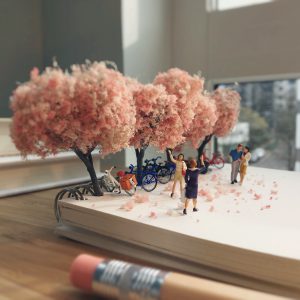 Do you remember the very first miniature-centric scene you staged?
Do you remember the very first miniature-centric scene you staged?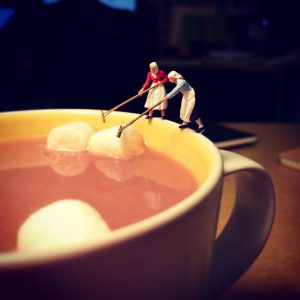 How can fans purchase the book?
How can fans purchase the book? 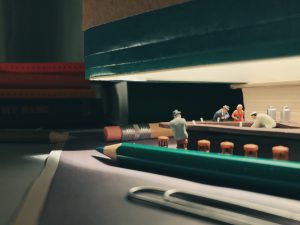 Favorite miniature photo you’ve taken?
Favorite miniature photo you’ve taken?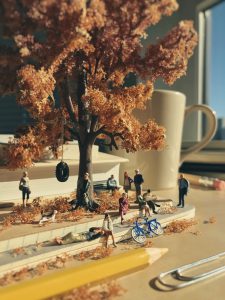 Anything else you’d like to add?
Anything else you’d like to add? 